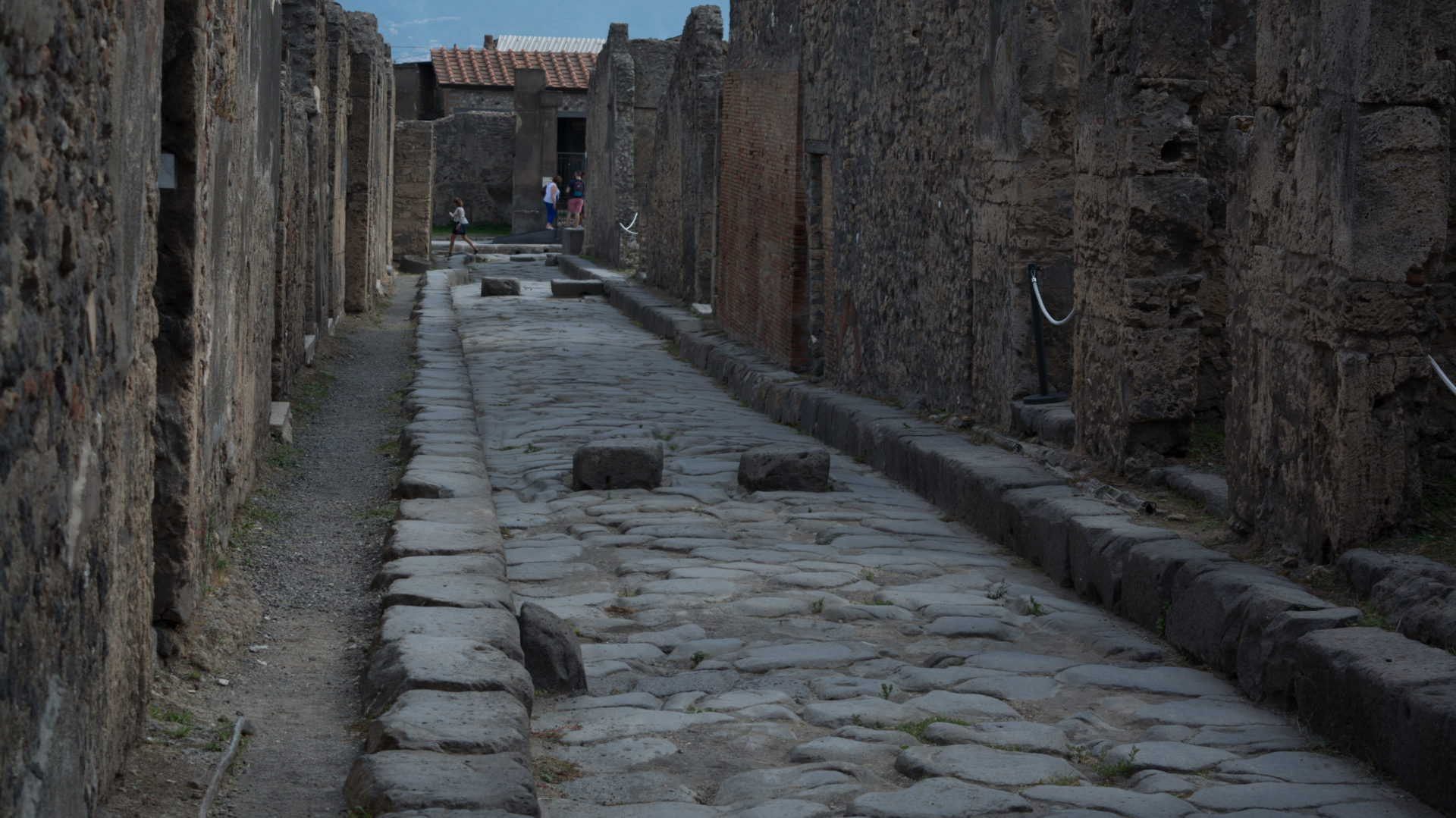On Day 5 we went to visit the Villas at Stabiae. These are luxury resort-like Roman houses built on a hill overlooking Vesuvius and the towns in the valley below. Rich and powerful Romans would likely have lived in these houses prior to the eruption, along with their family and servants. During the Social War the Roman general Sulla destroyed the town that had existed here before, so these luxury Villas were built on the site afterwards and were thus very new at the time of the eruption.
These Villas were excavated by the Bourbons (a monarchy which was based in Spain at the time) in the 1700s. The Bourbons did most of their excavating by digging tunnels through the volcanic material. They would often dig through the walls as well, so as we walked around the site we could often find patched-up holes where these tunnels had been. However, they could not excavate every nook and cranny this way, so parts of the site were still being excavated in the 1950s.
Our first stop was the Villa Arianna, and the view from the terrace here was simply beautiful:
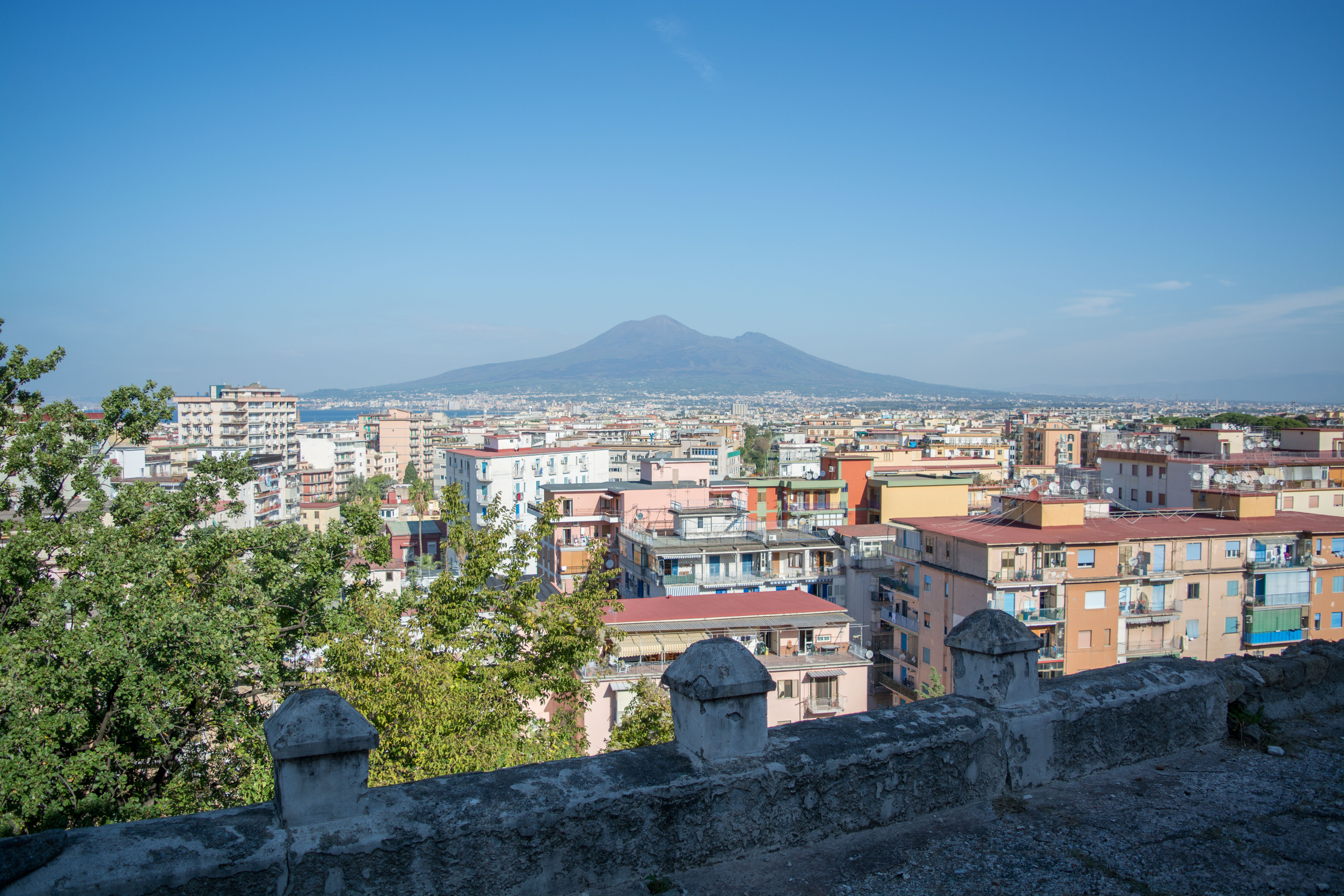
Inside were a lot of very impressive frescoes, some of which were well preserved and others were deliberately defaced by the Bourbons. Tony explained that when the Bourbons excavated this site, they took the best frescoes back to the Royal collection, and everything that wasn’t taken back was destroyed. They did this to make the items in the Royal collection rarer, and hence more valuable:
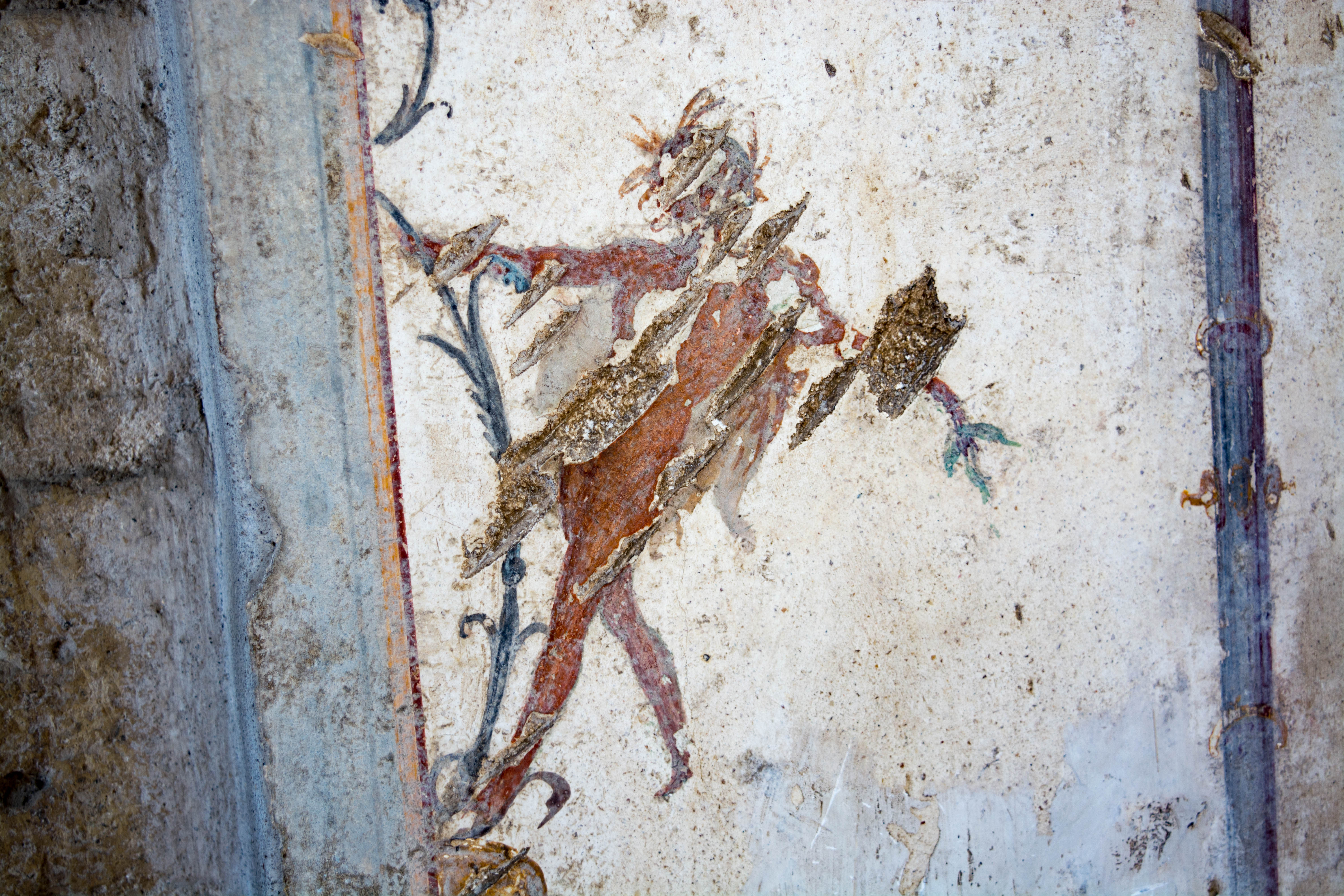
But since the Bourbons did not excavate everything, some frescoes escaped their tools:
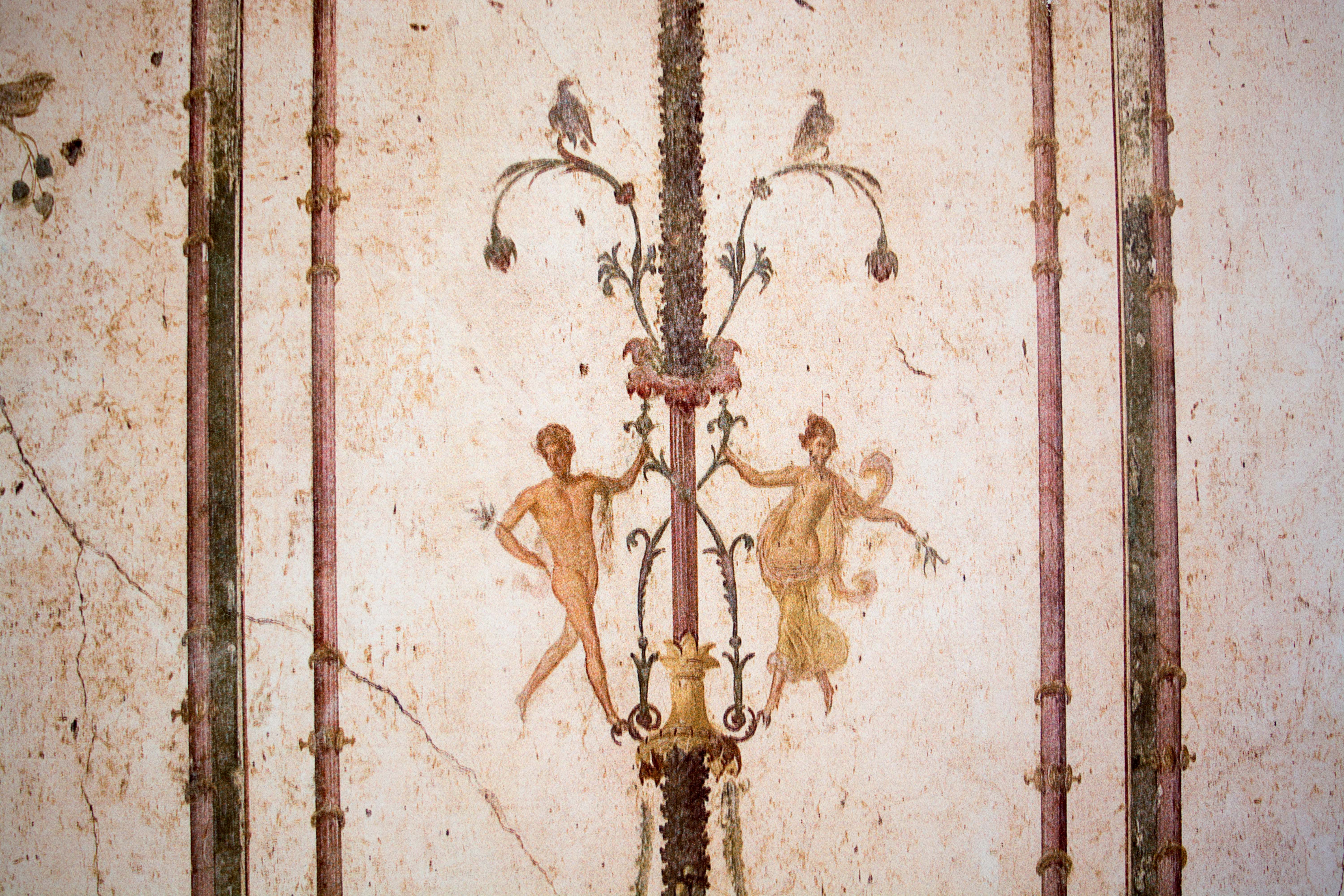
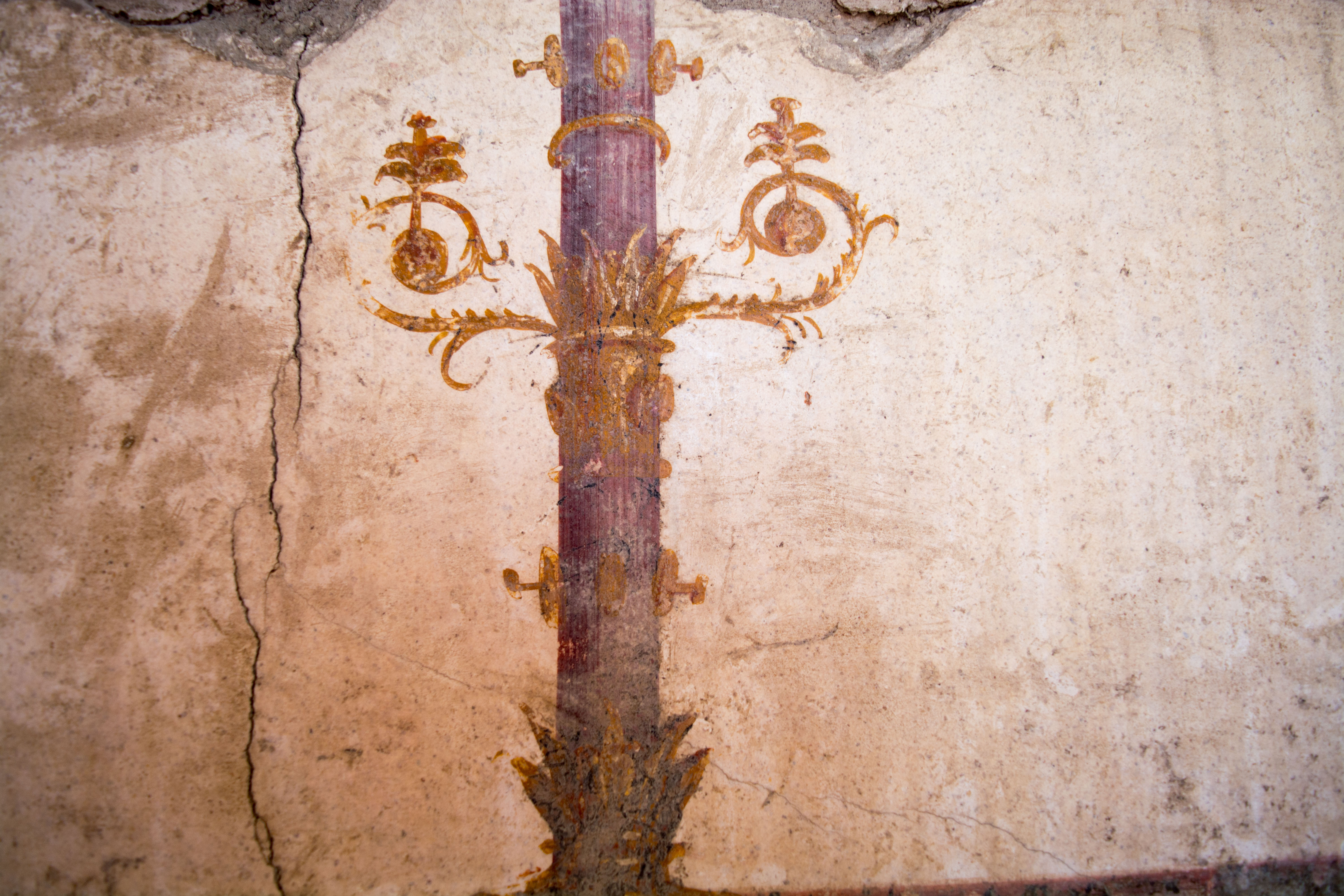
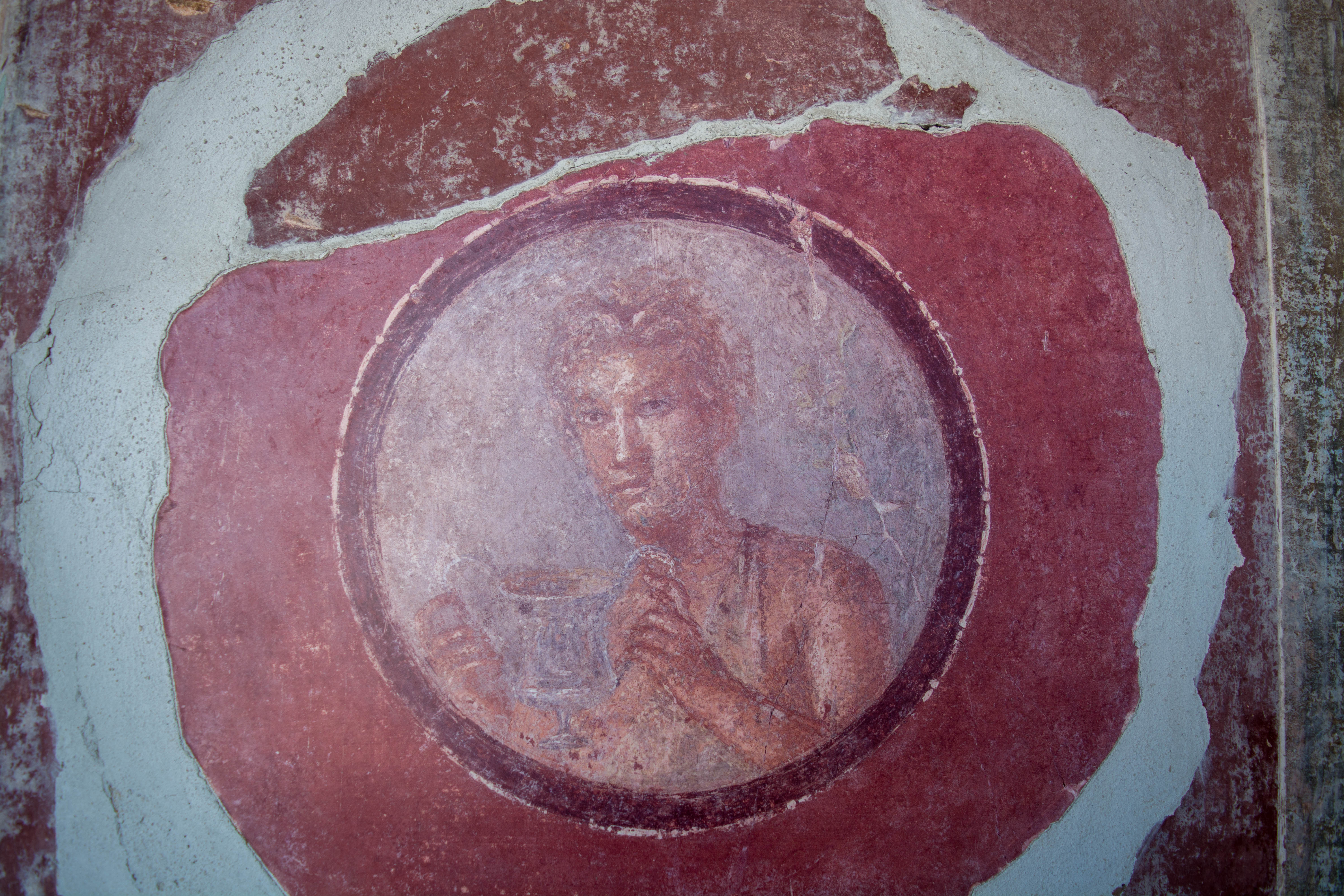
Some of the walls in this Villa look remarkably similar to mid-20th century wallpaper:
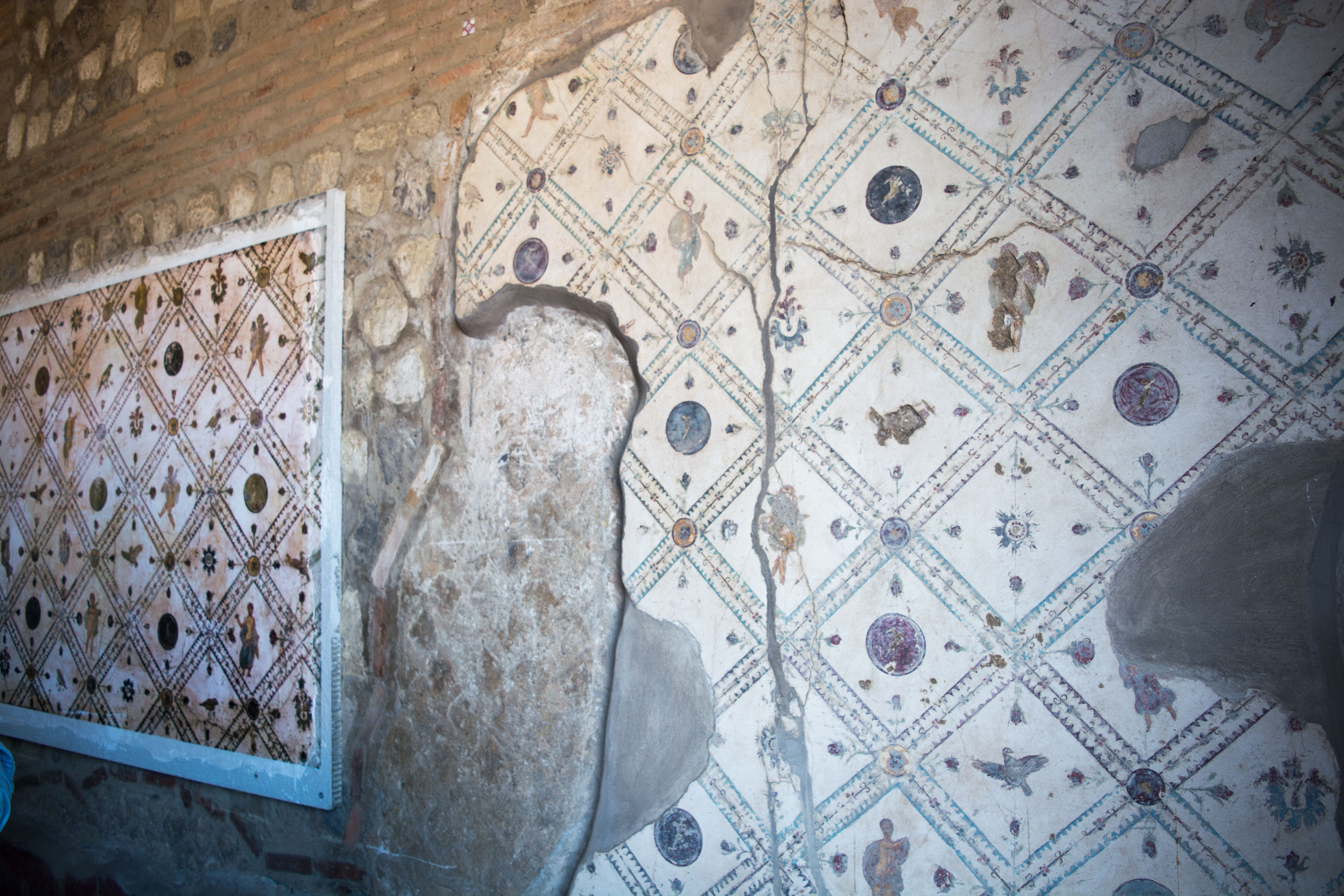
Others look distinctly Roman. This particular interior design style is also quite popular in Pompeii:
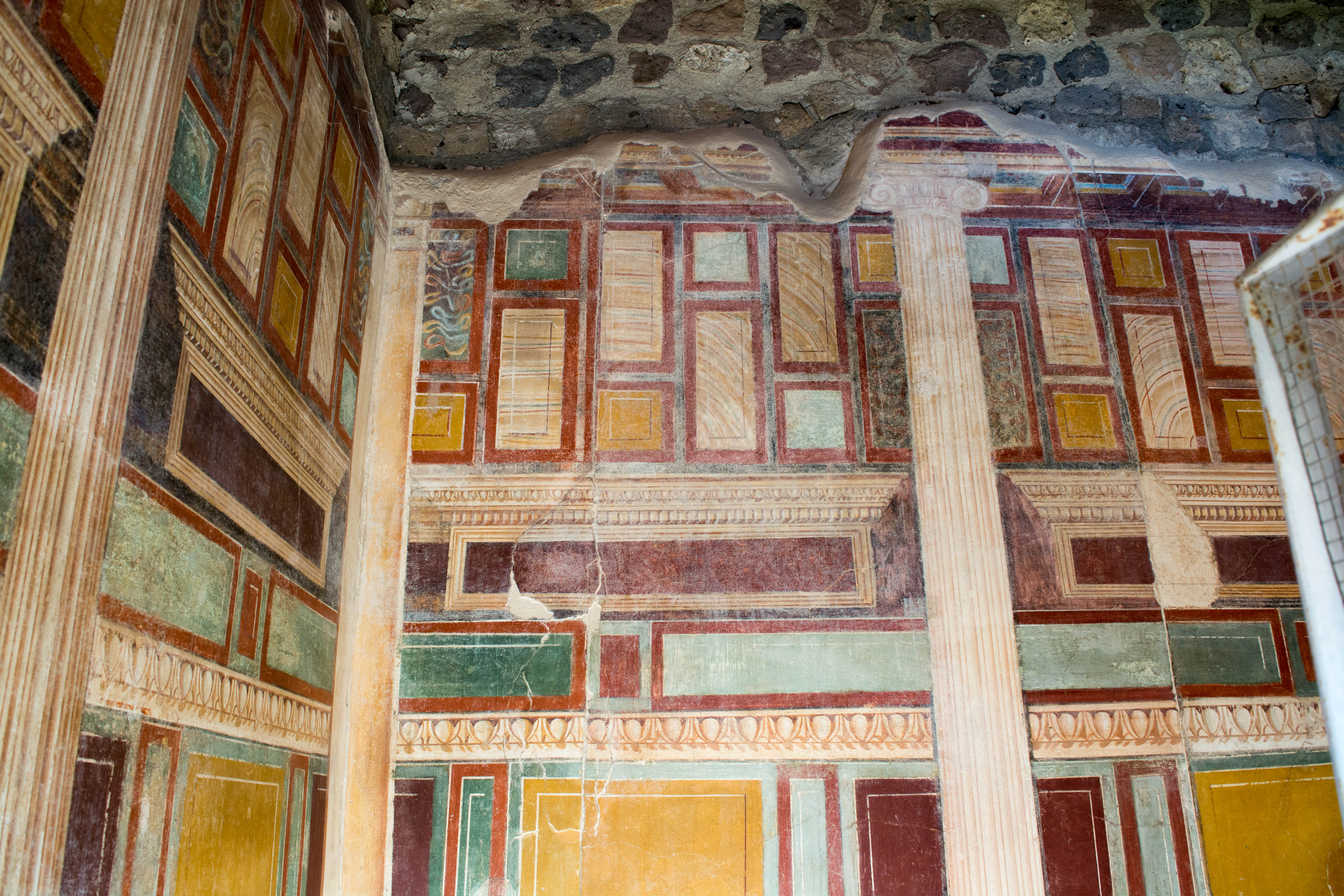
We also went to the Villa San Marco. The front entrance to this Villa has some Bourbon graffiti near the door, which read, “May the Blessed Virgin protect us.” Digging these tunnels was dangerous work, and the excavators would often carve little prayers here and there:
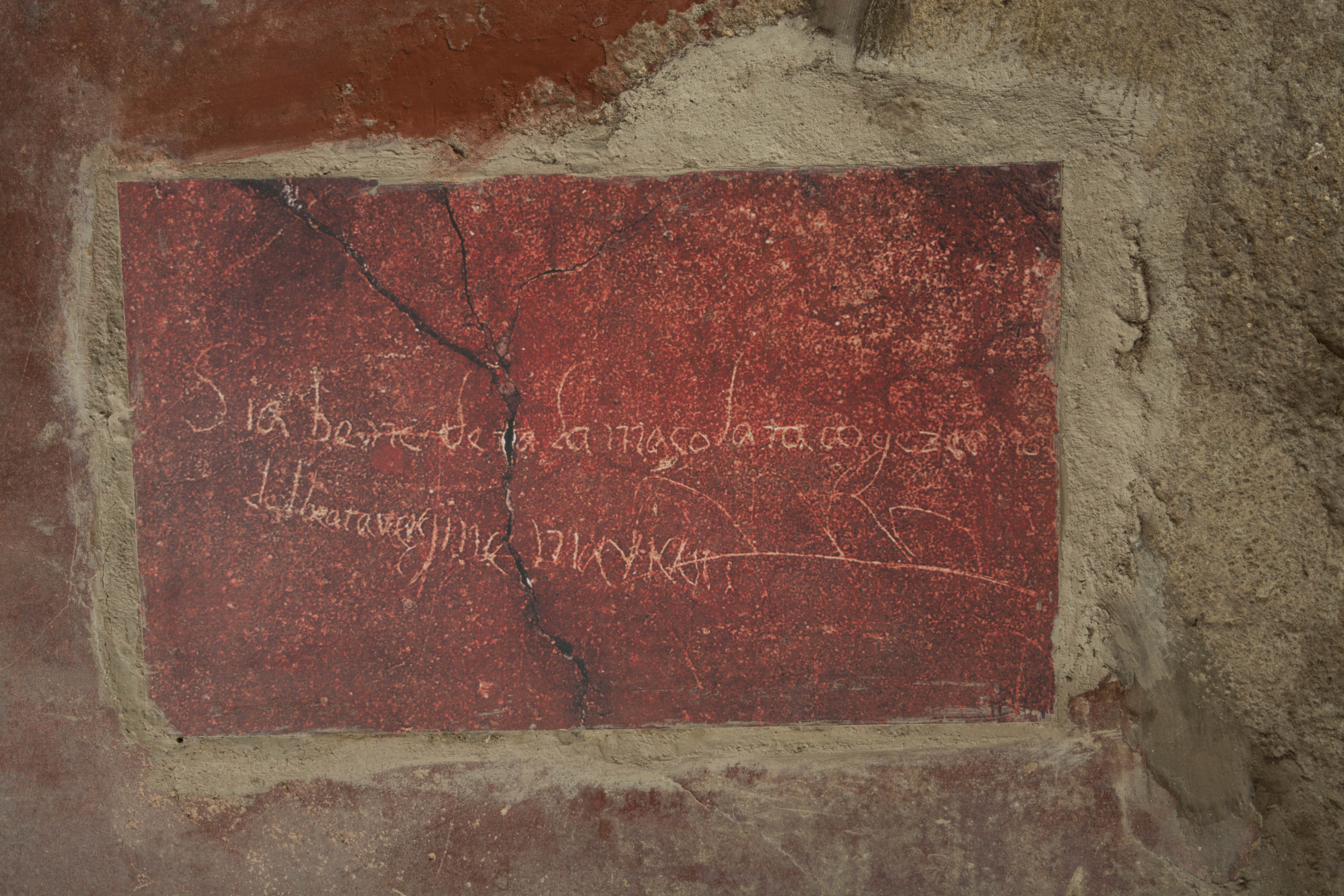
Just inside, the opening in the roof above the impluvium is perfectly intact:
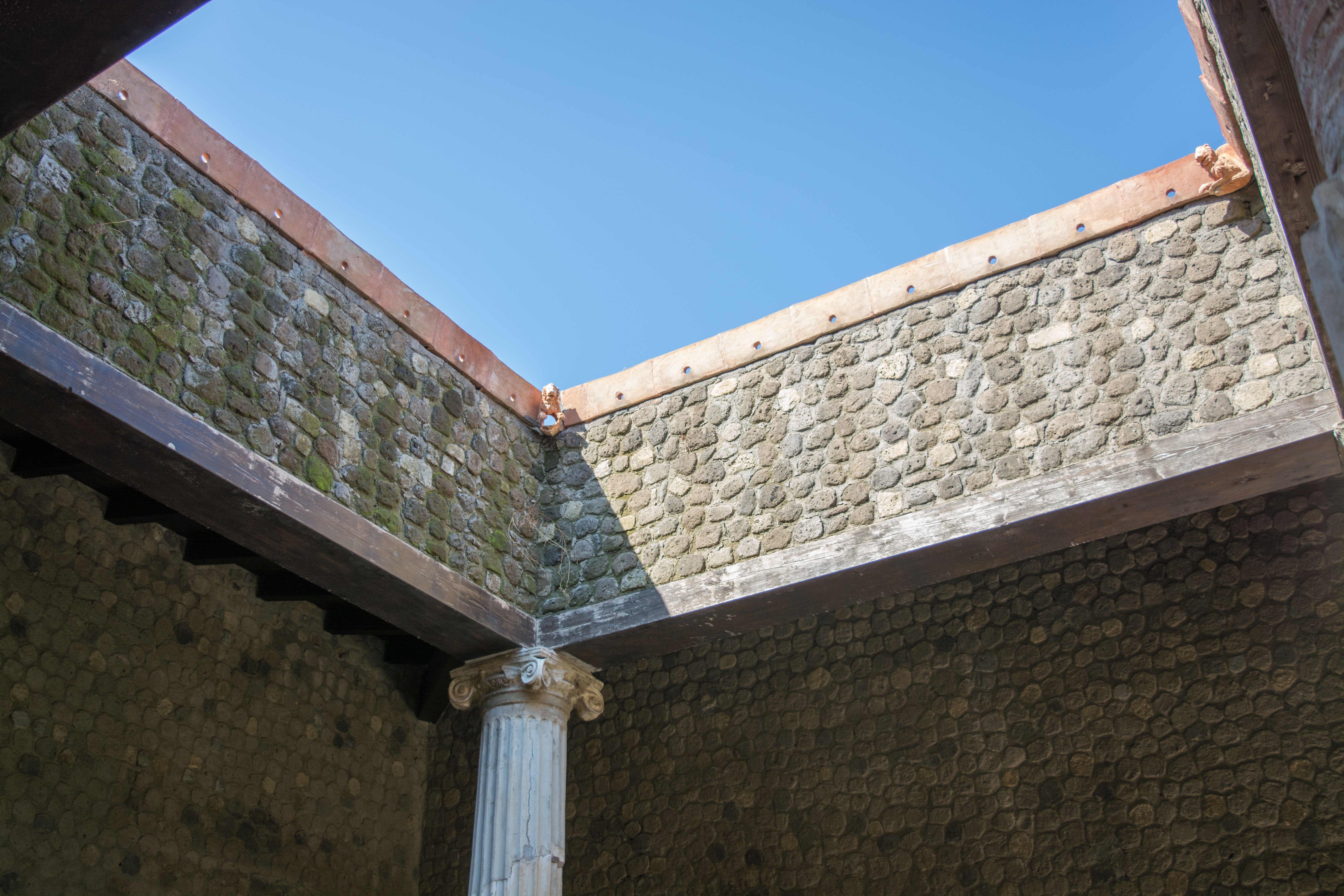
Some of the frescoes in here were even more remarkable than the ones in the Villa Arianna:
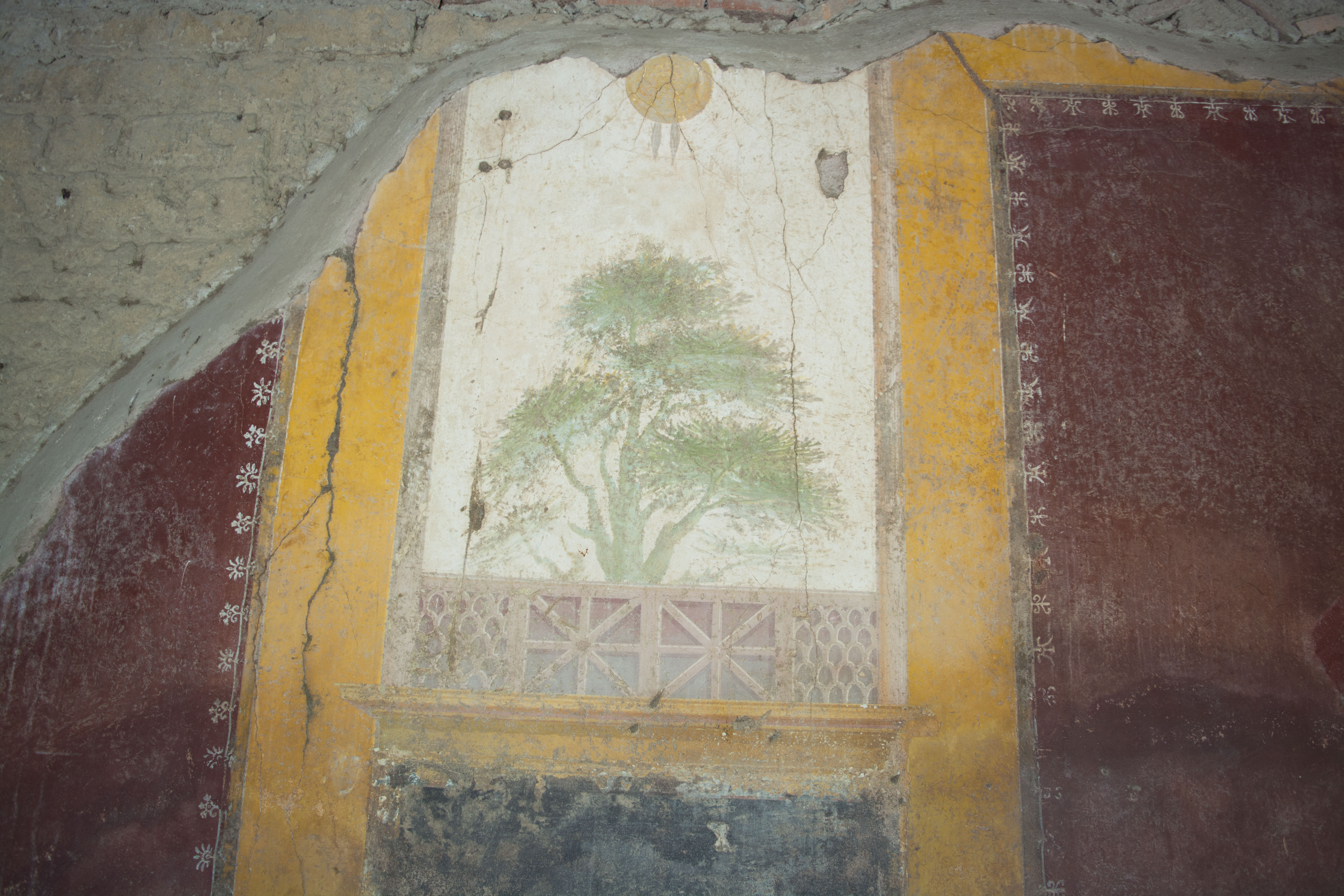
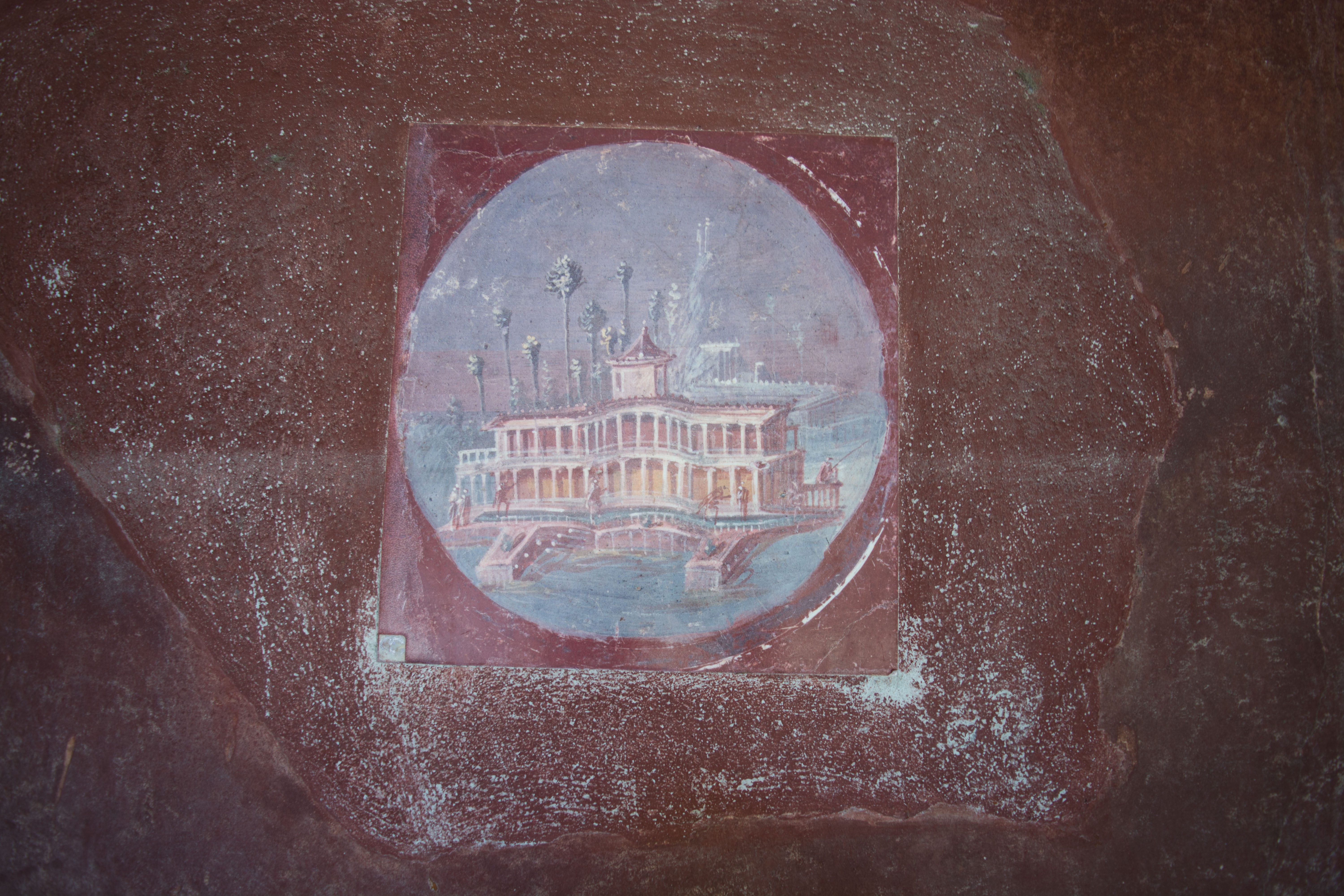
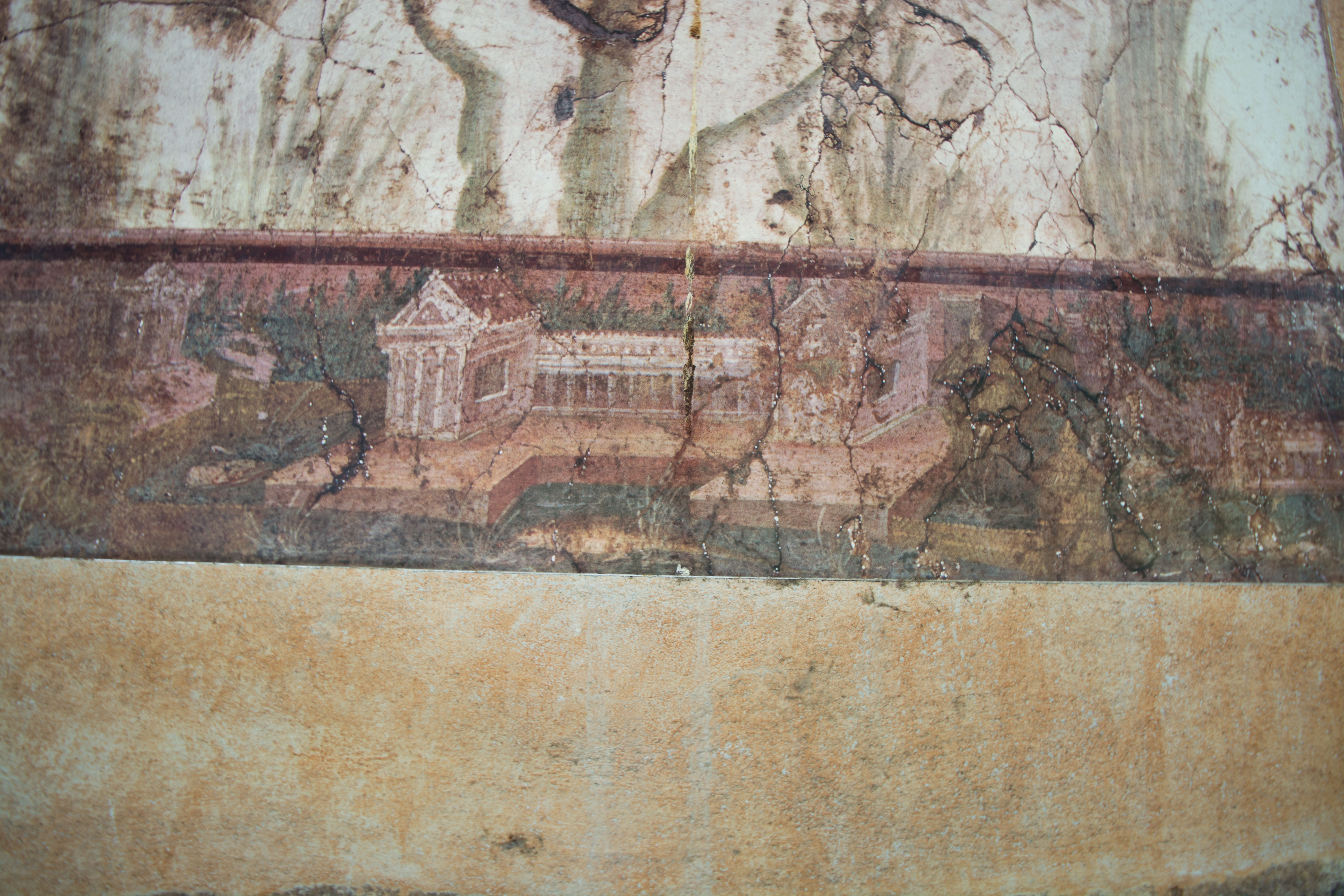
This Villa includes a large pool complex on a terrace overlooking Vesuvius. The rear of the pool has some impressive plaster artwork:
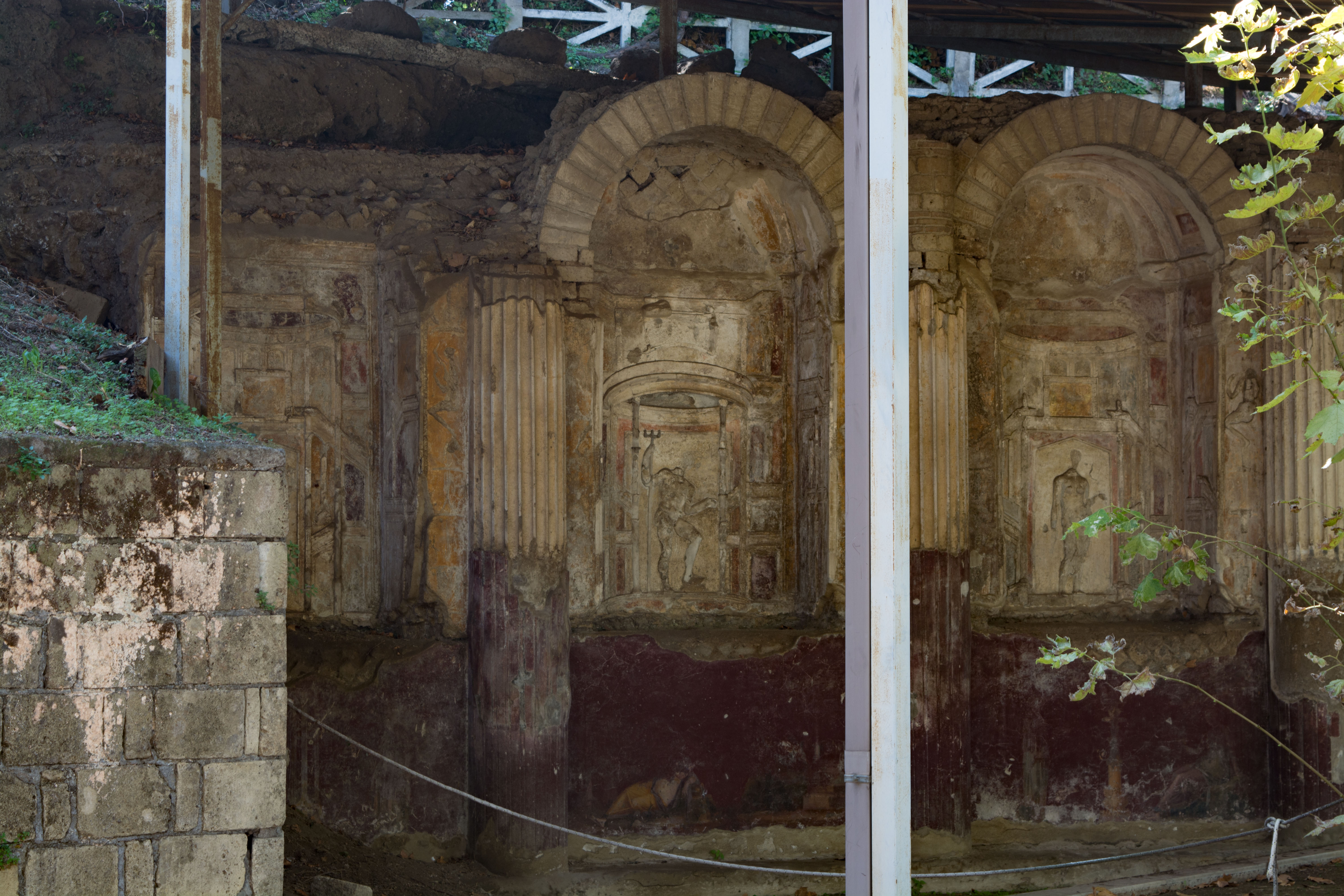
Here is the view from the end of the pool:
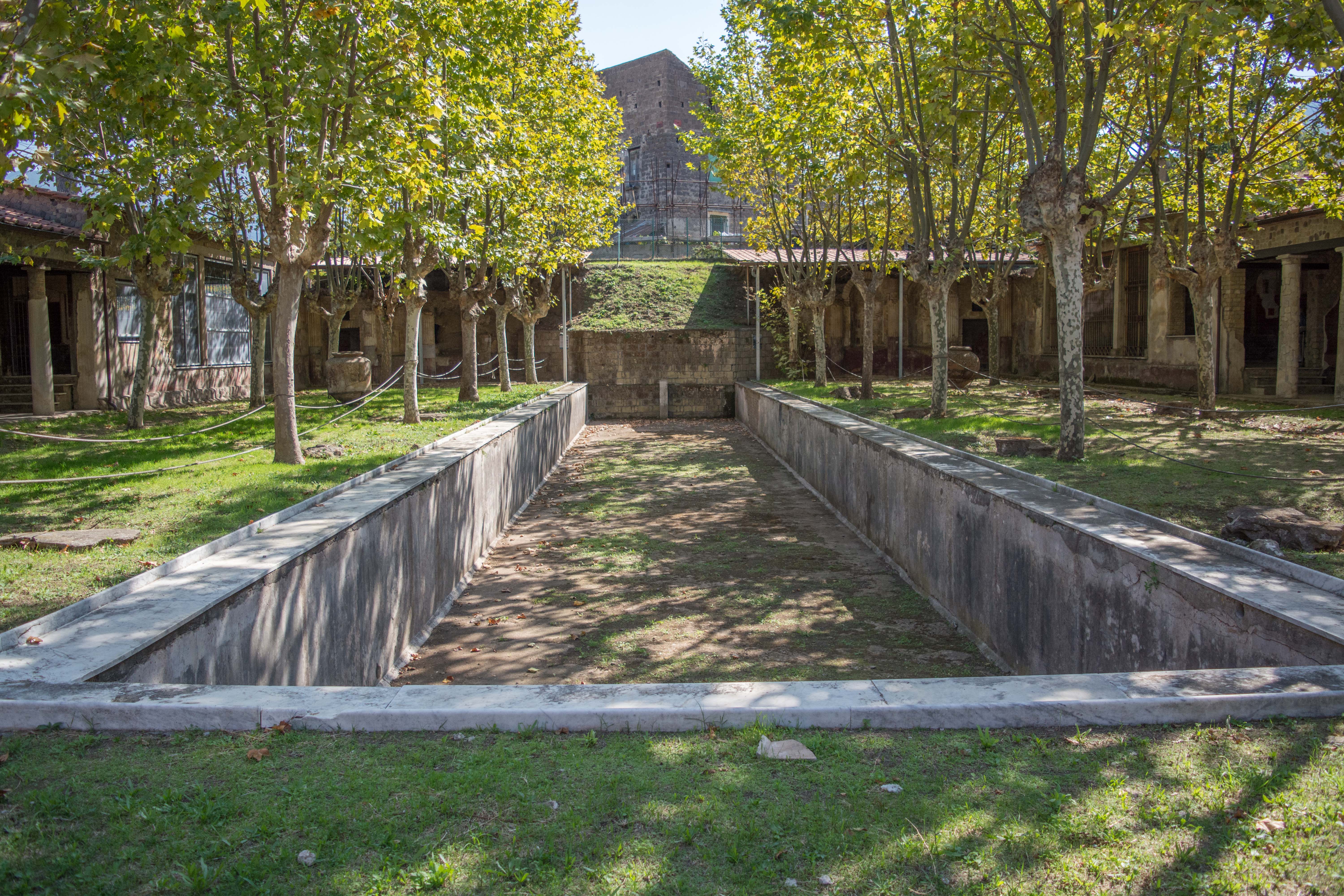
On either side of the pool are more rooms with still more incredible frescoes:
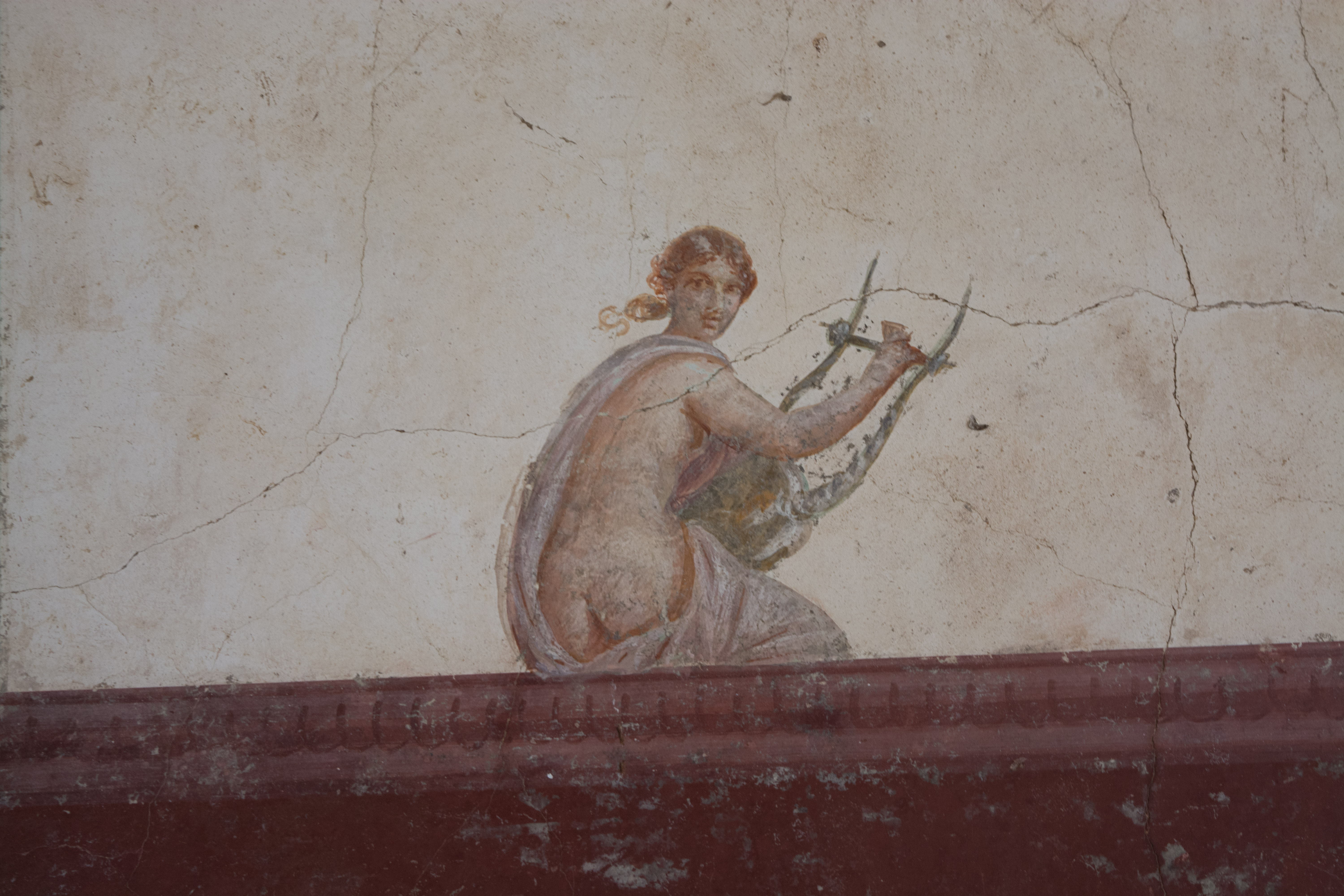
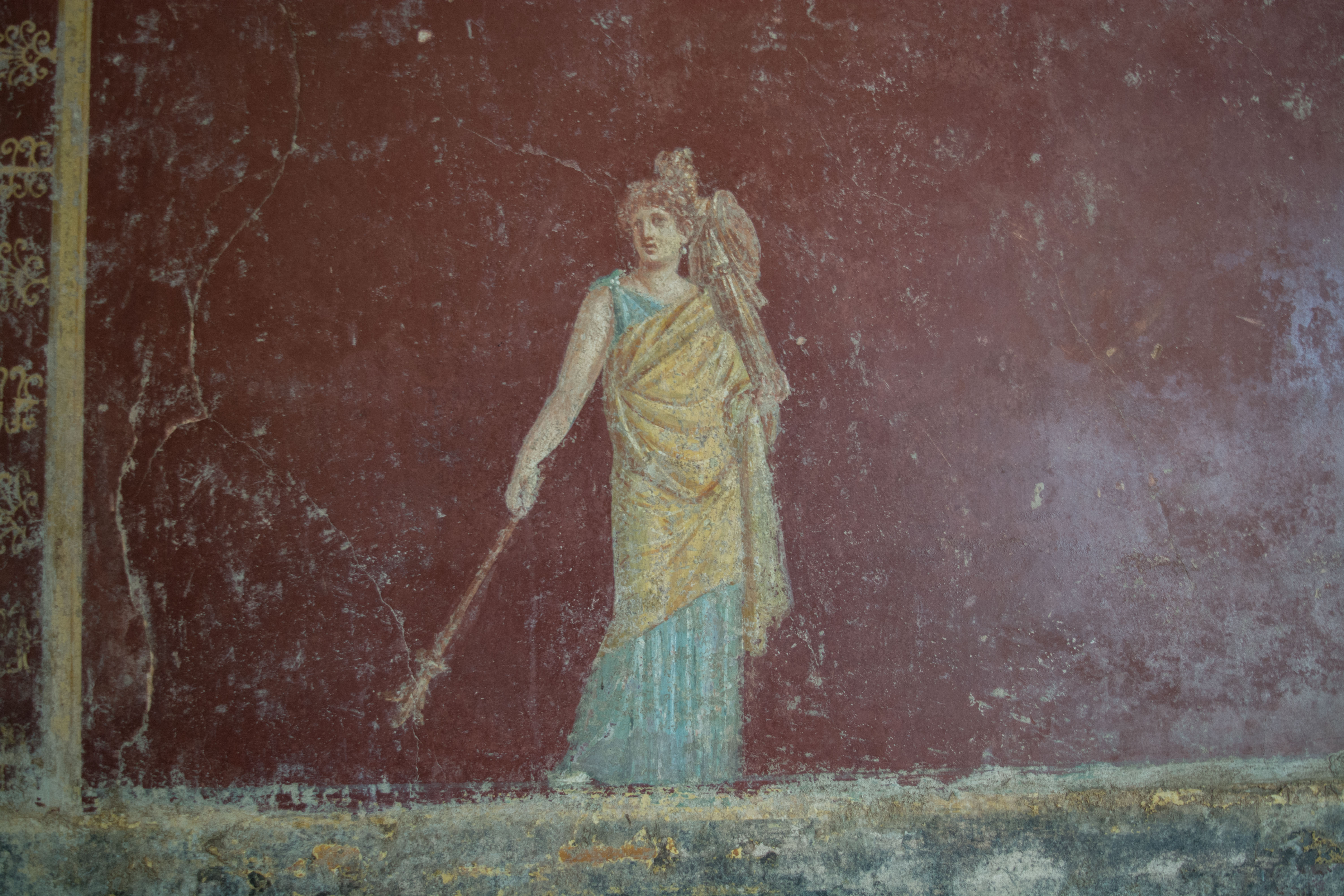

On the day of the eruption Pliny the Elder arrived at one of these Villas. He was later killed, probably by hot gasses from one of the pyroclastic flows. His nephew, Pliny the Younger, described the eruption as, “A cloud shaped like a Mushroom Pine rising from the mountain.” I couldn’t resist the chance to put two-and-two together for this “Pliny shot”
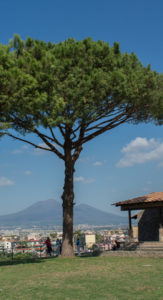
Here, as in Pompeii, we found a spot where some small Roman child had drawn on the walls:
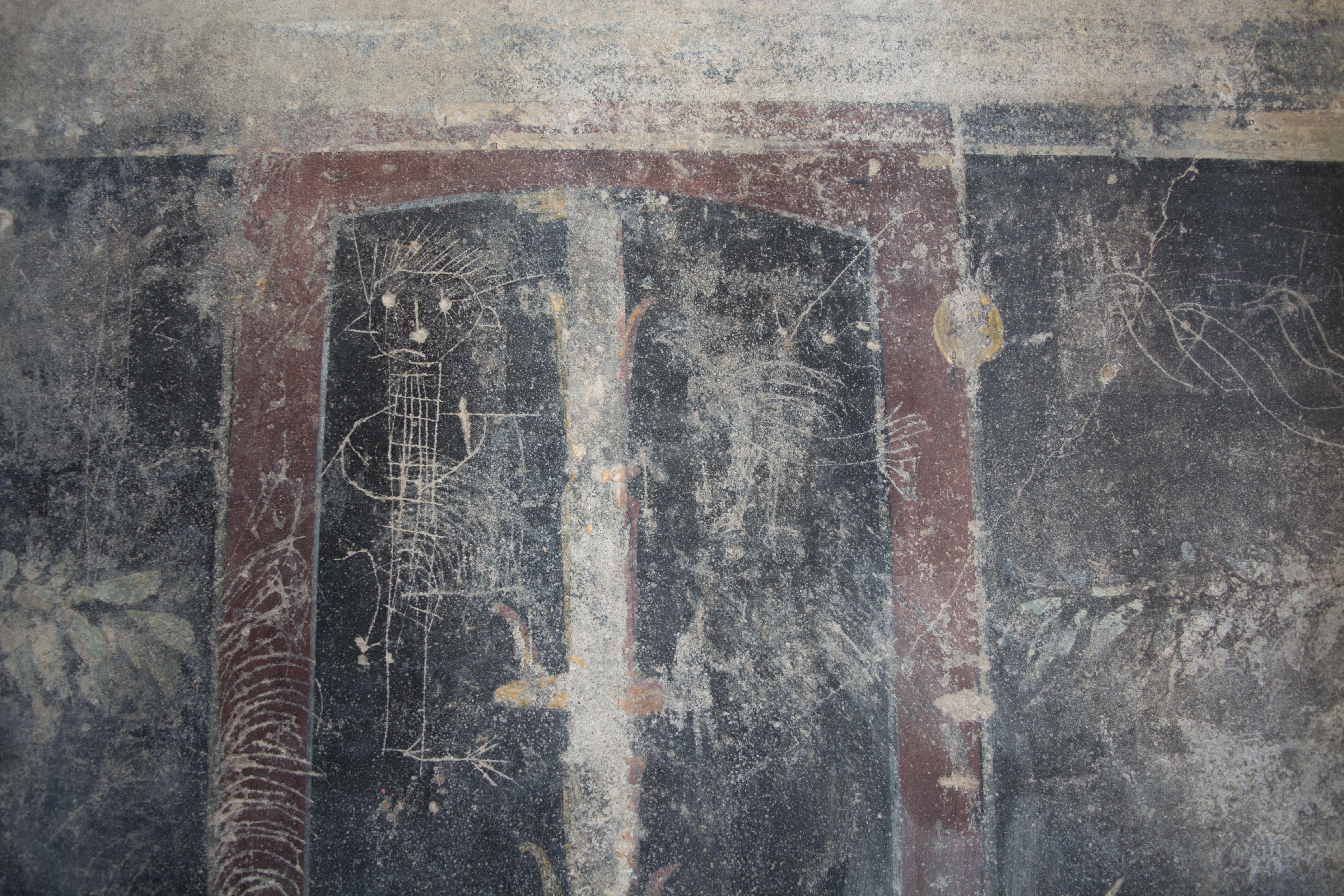
After visiting these Villas we were given the chance to go back to Pompeii and wander around the ruins on our own. I took the opportunity to walk a short distance away and visit the Shrine of Our Lady of the Rosary. The Shrine is certainly the tallest building in Pompeii, and the interior is absolutely beautiful! After taking some time to admire the artwork, I sat down to pray a Rosary (I had brought mine along just for this purpose). As I was finished they started praying the Rosary in Italian, and as much as I wanted to follow along I was out of time. I would have to move quickly through the ruins of Pompeii to catch up to the group (and the bus) on the opposite side.
I entered the ruins once again at the Amphitheater gate, and took the time to snap a few more pictures as I made my way to meet the others at the Marine Gate. Enjoy!
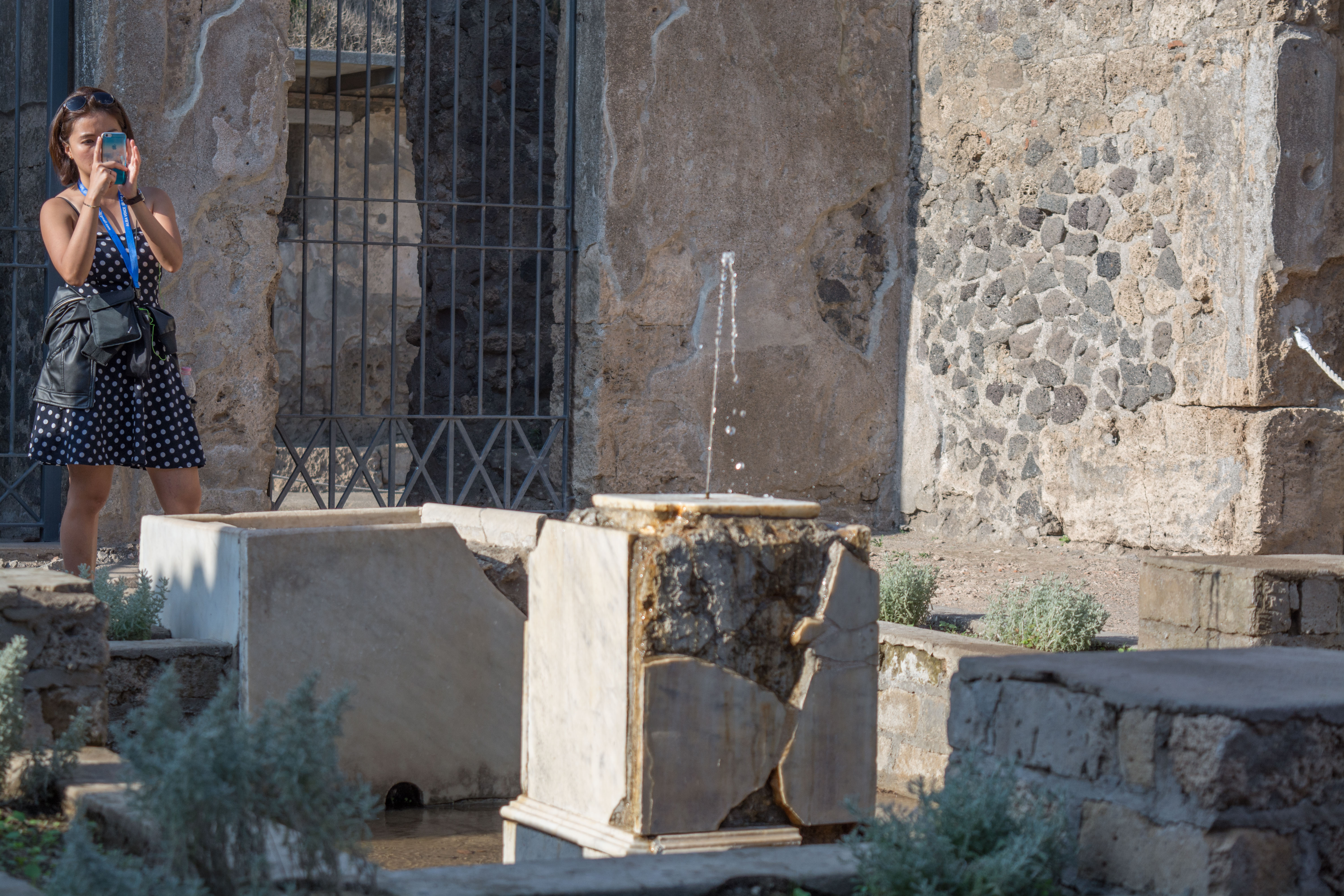
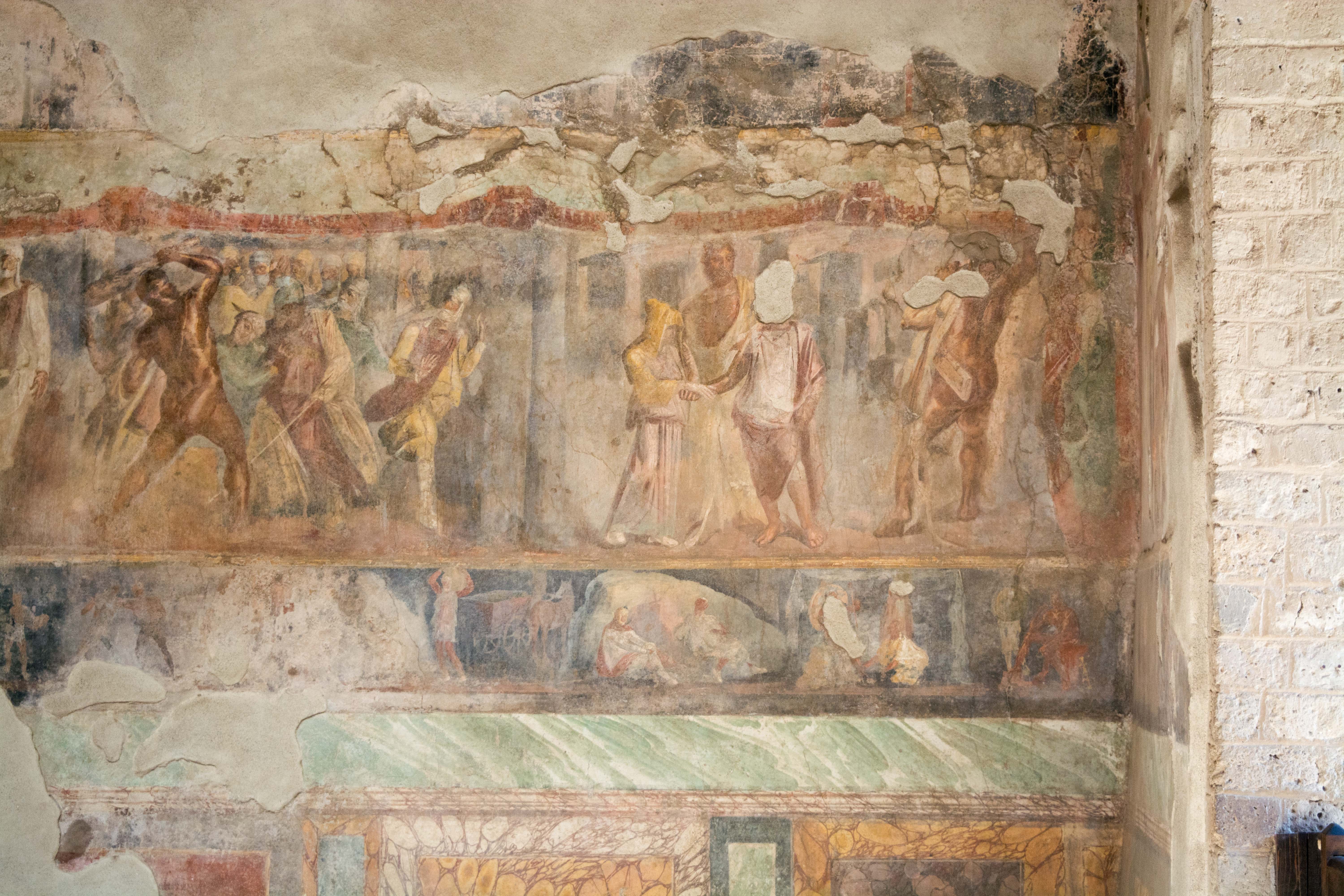
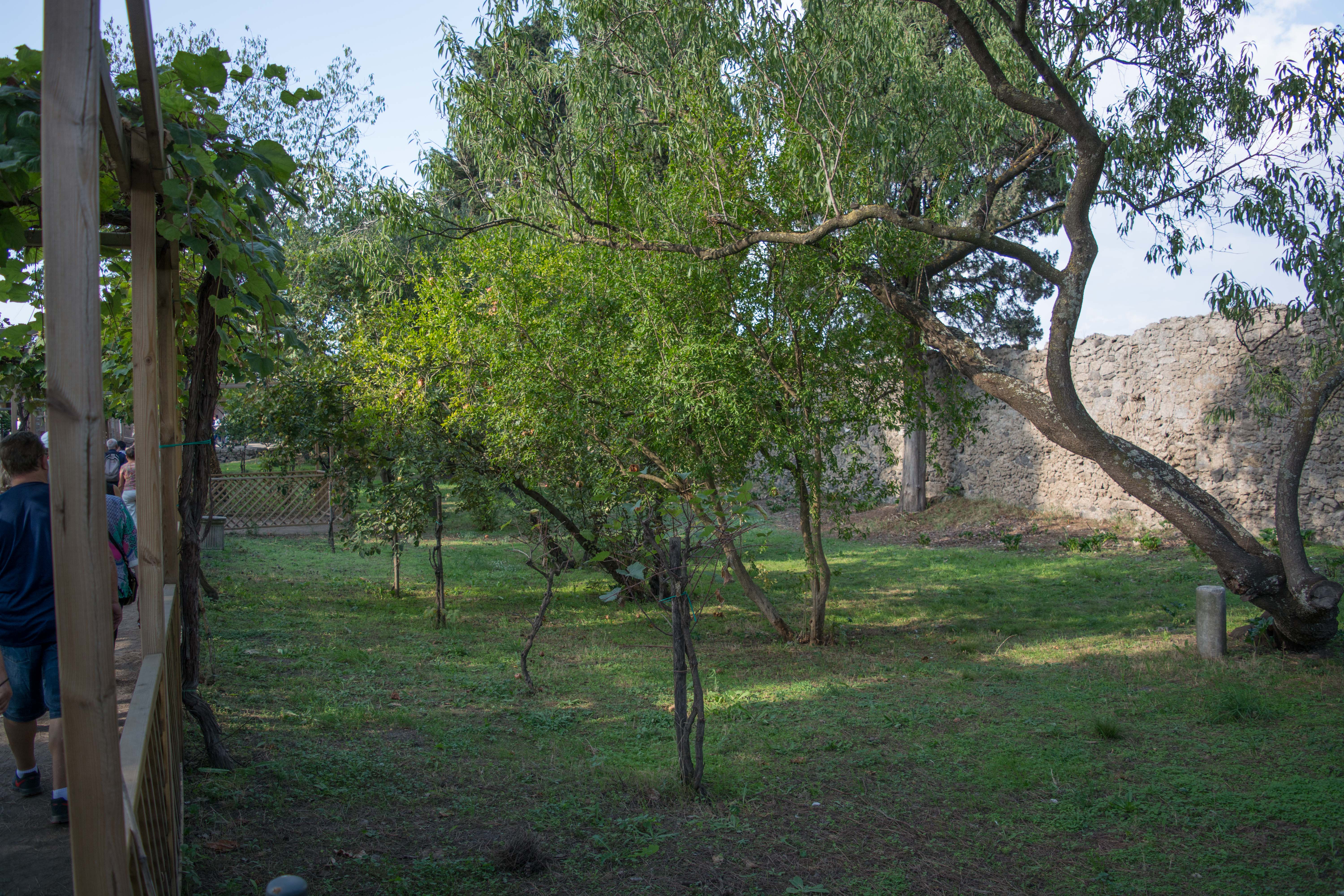
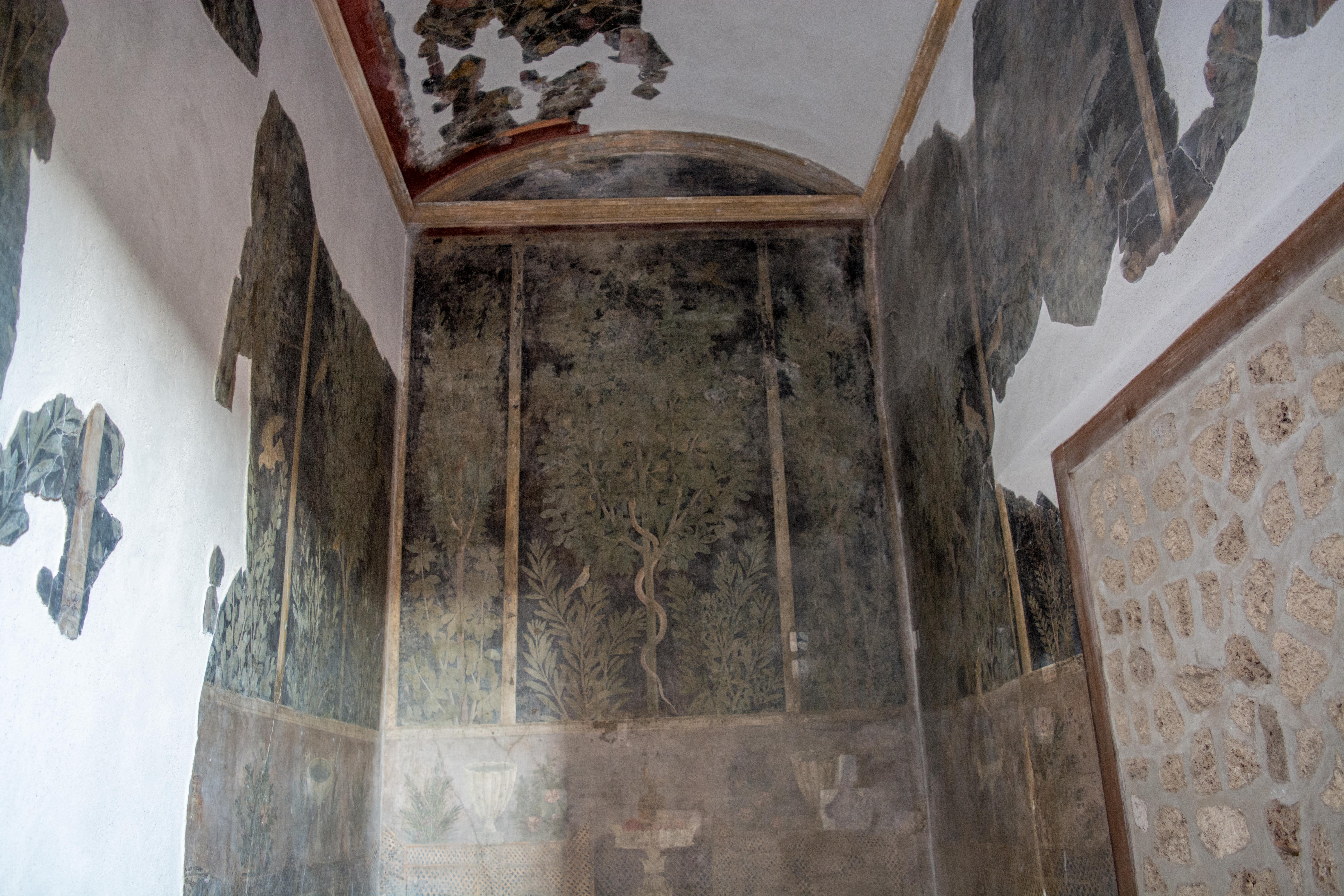
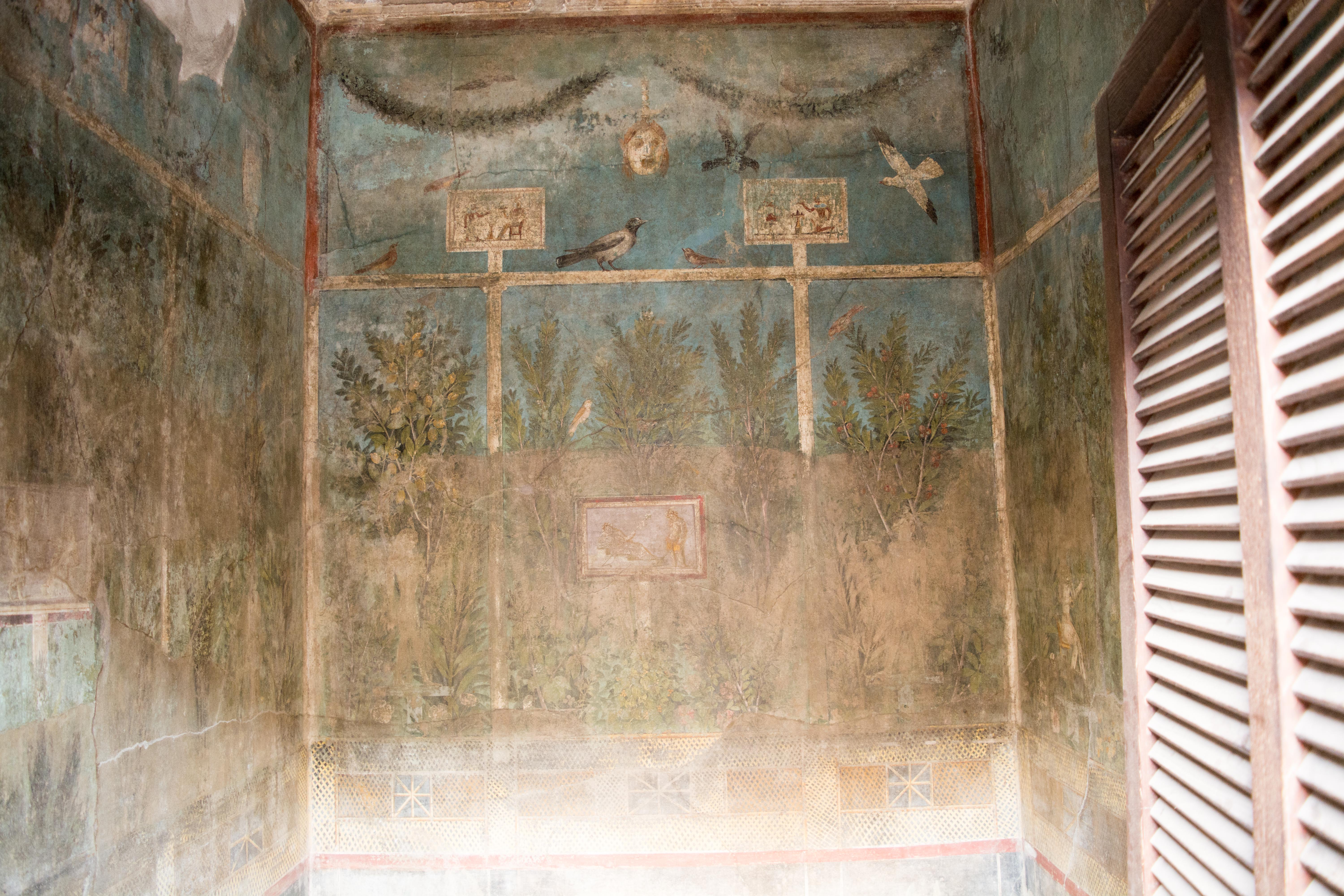
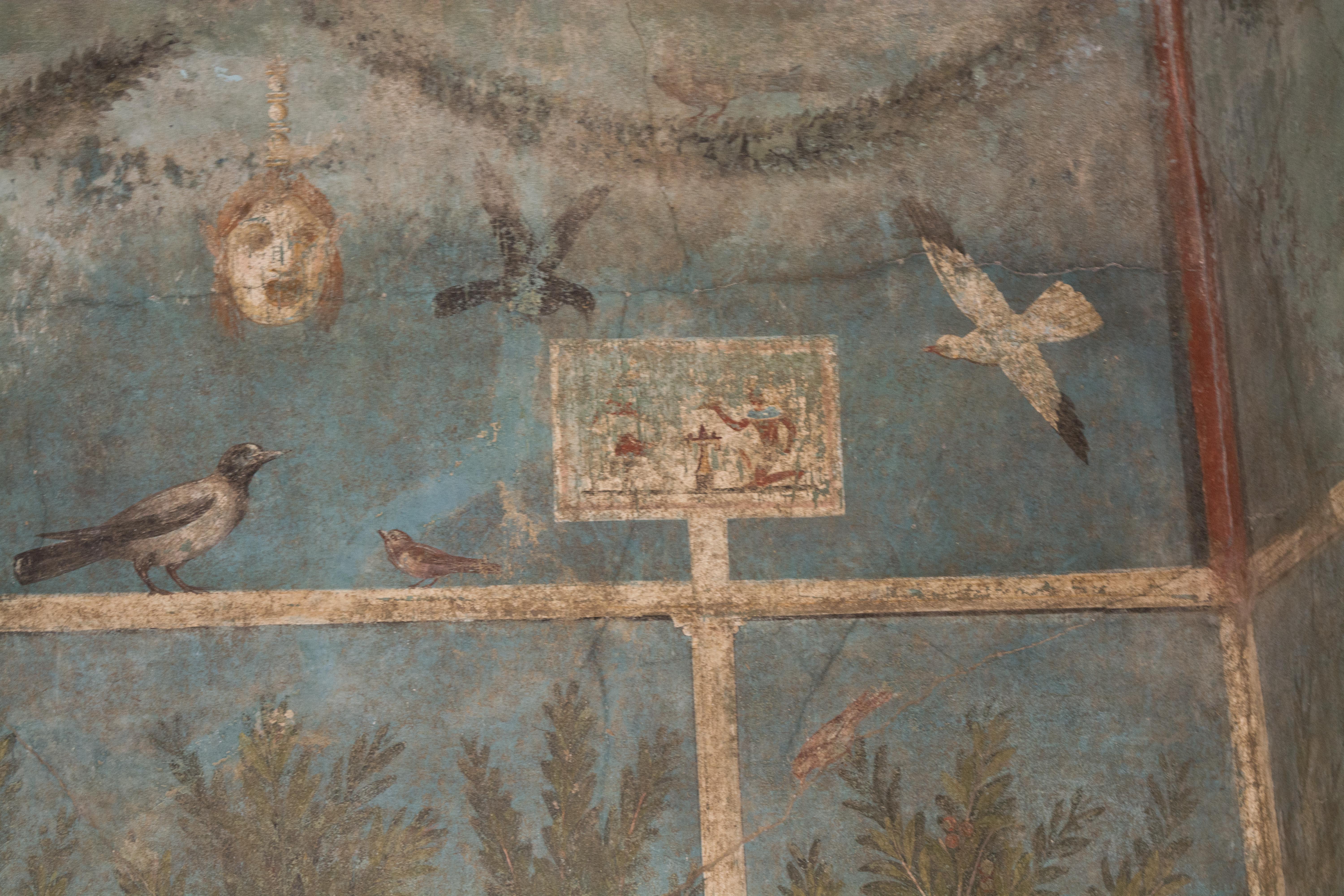

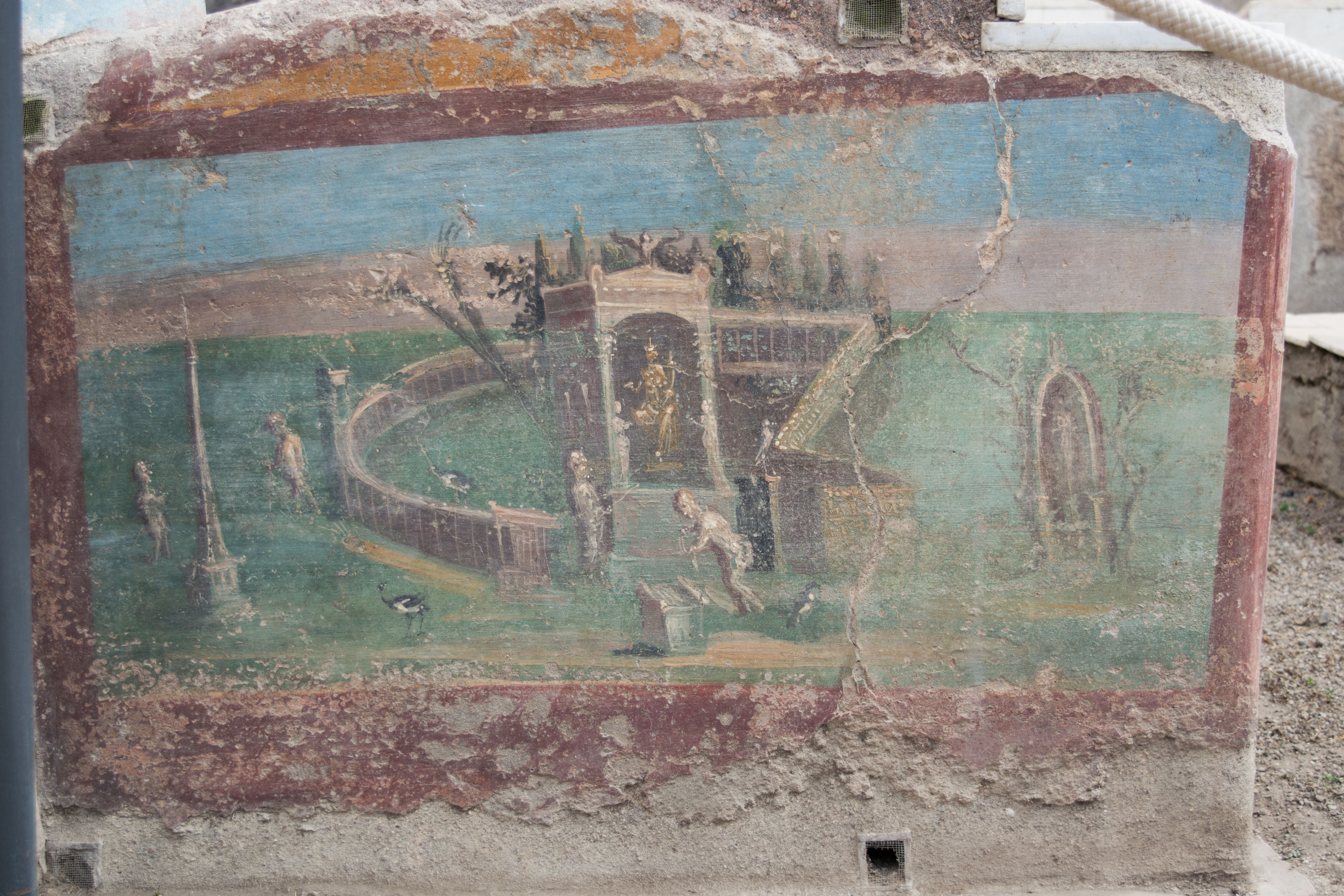
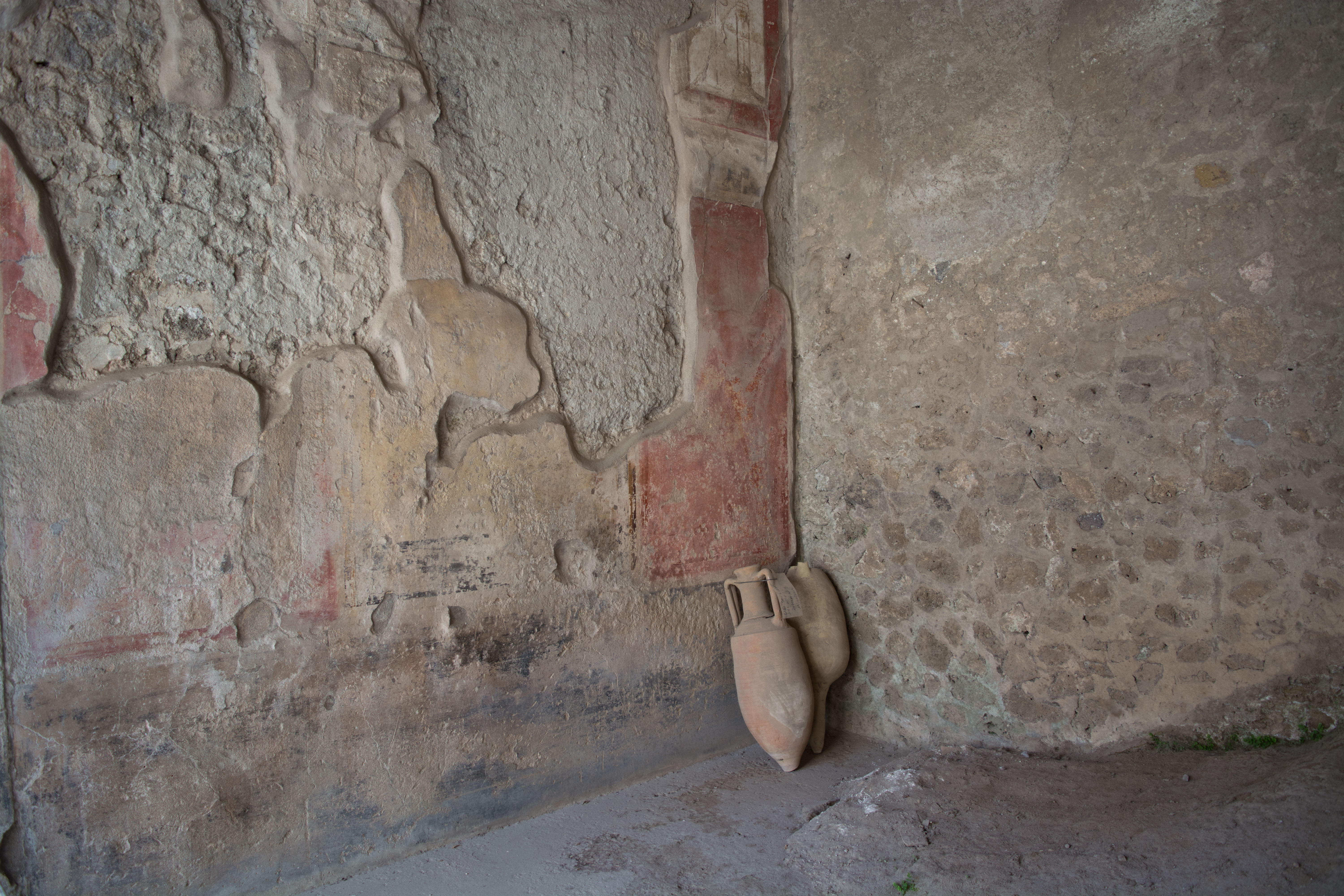
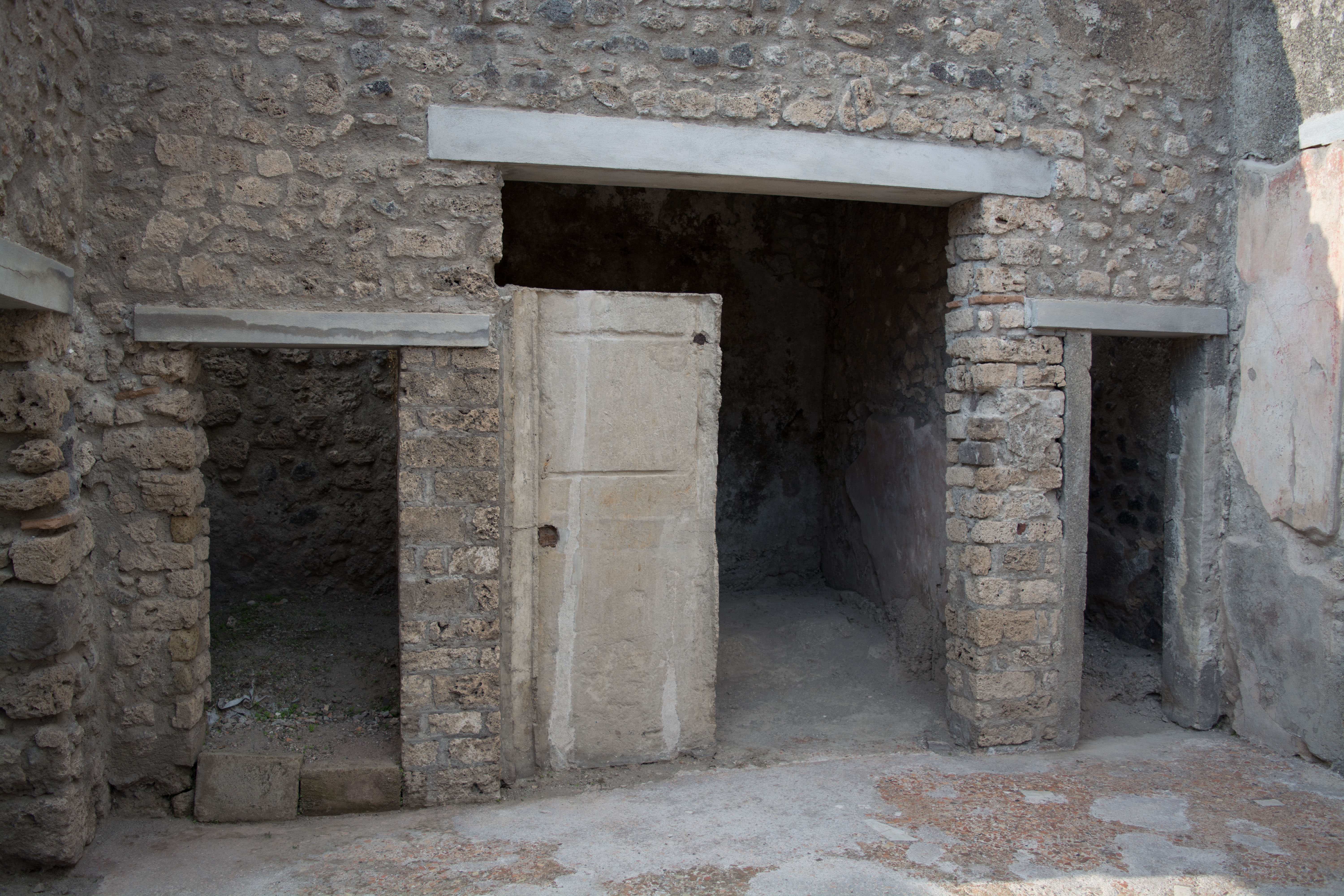
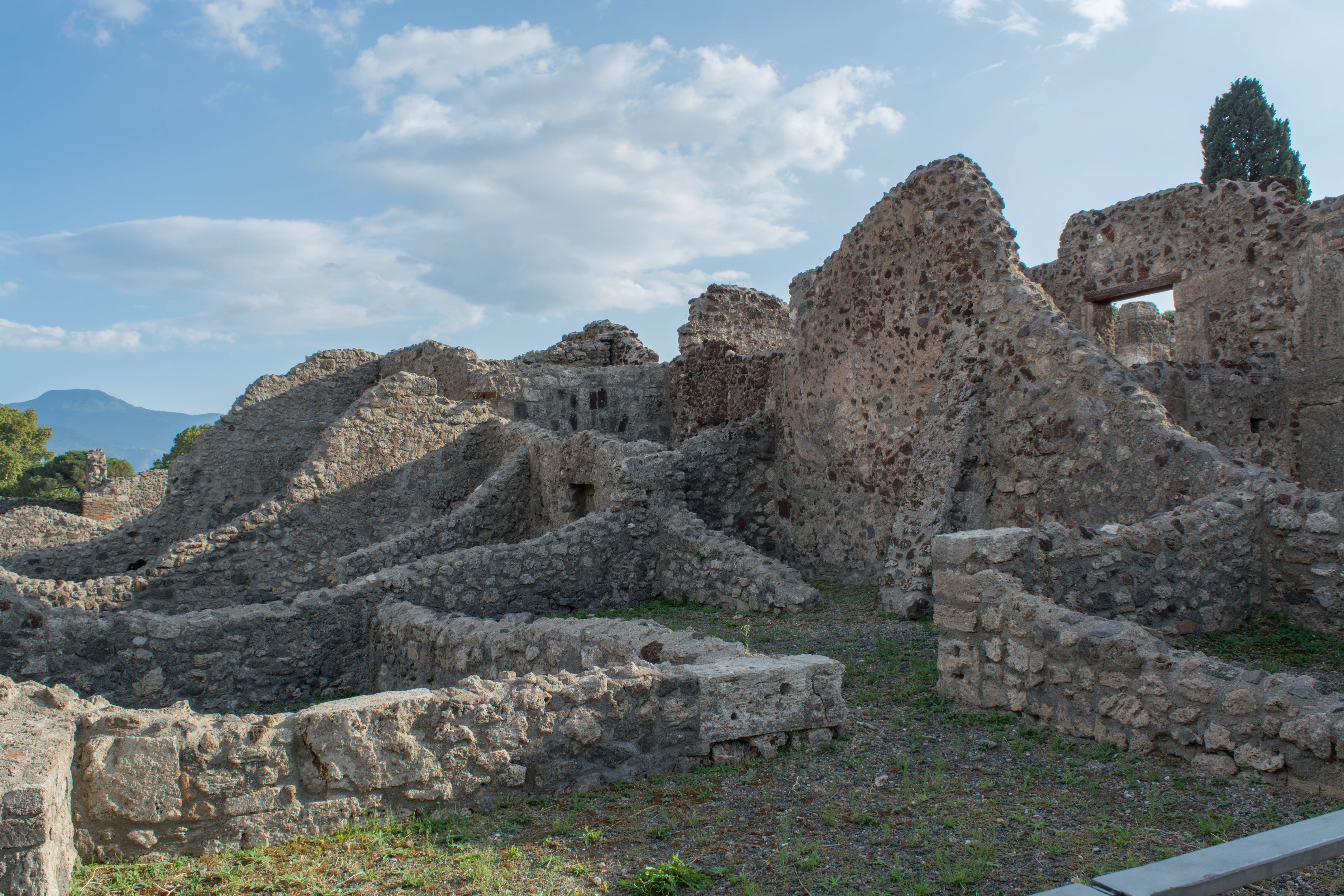
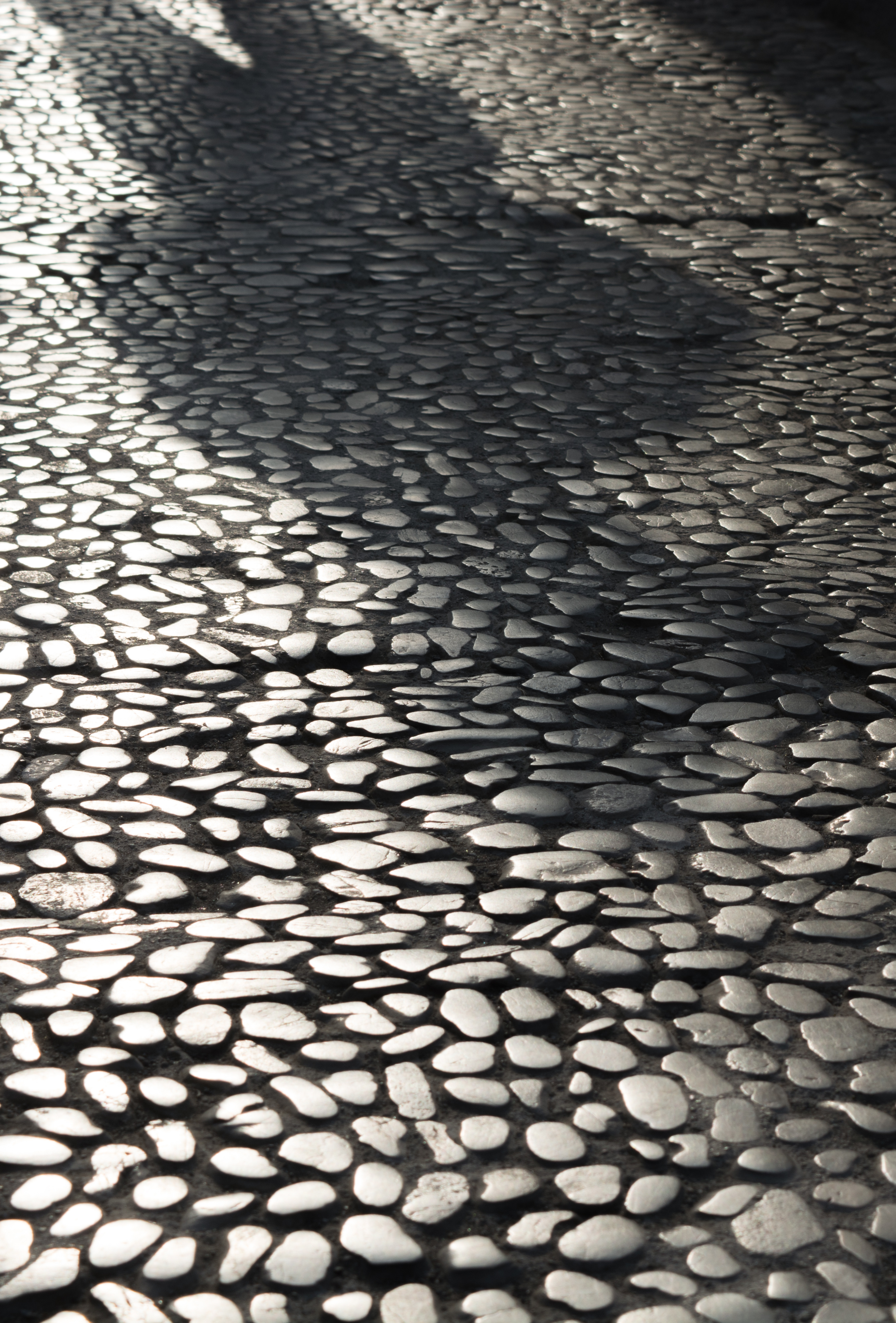
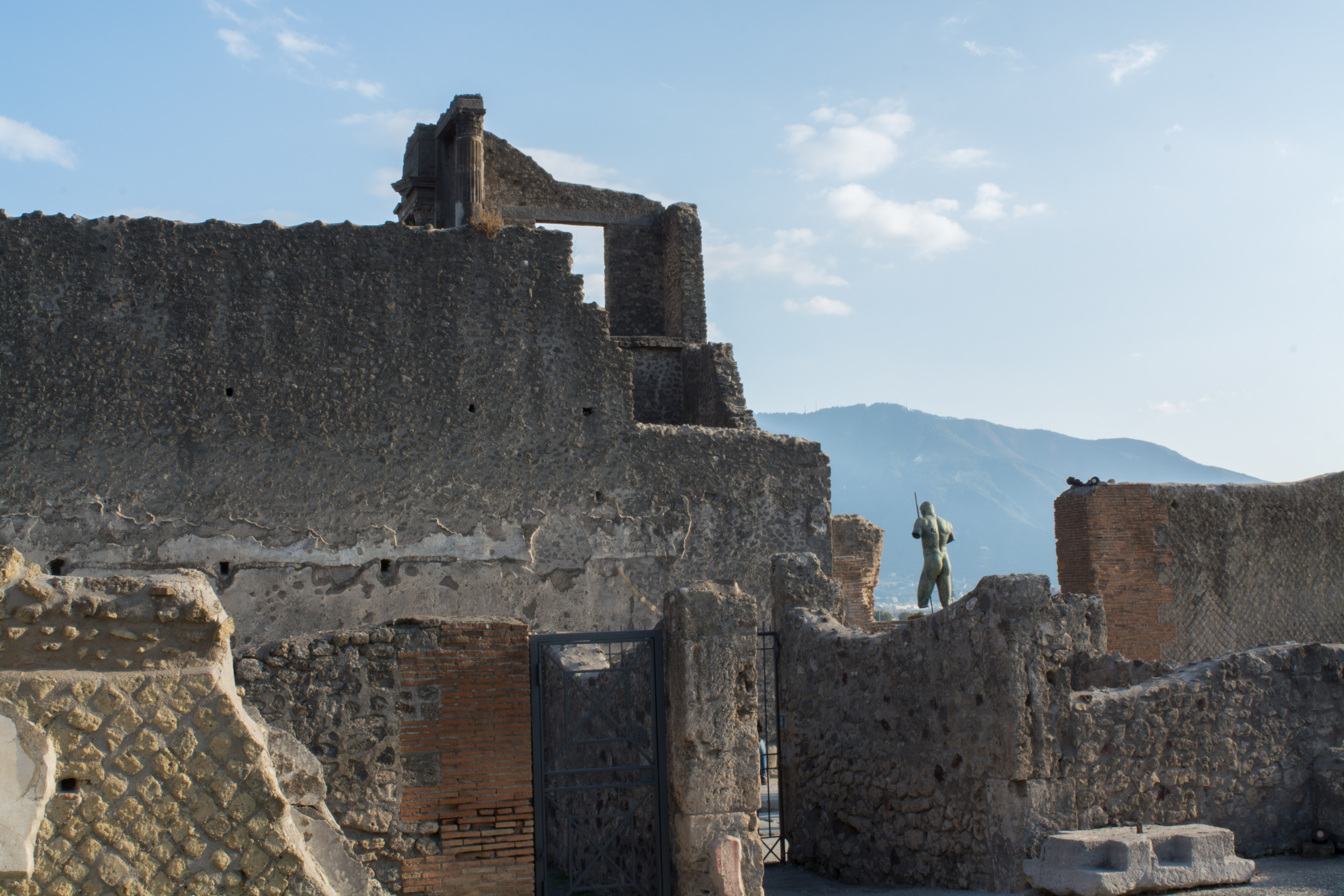
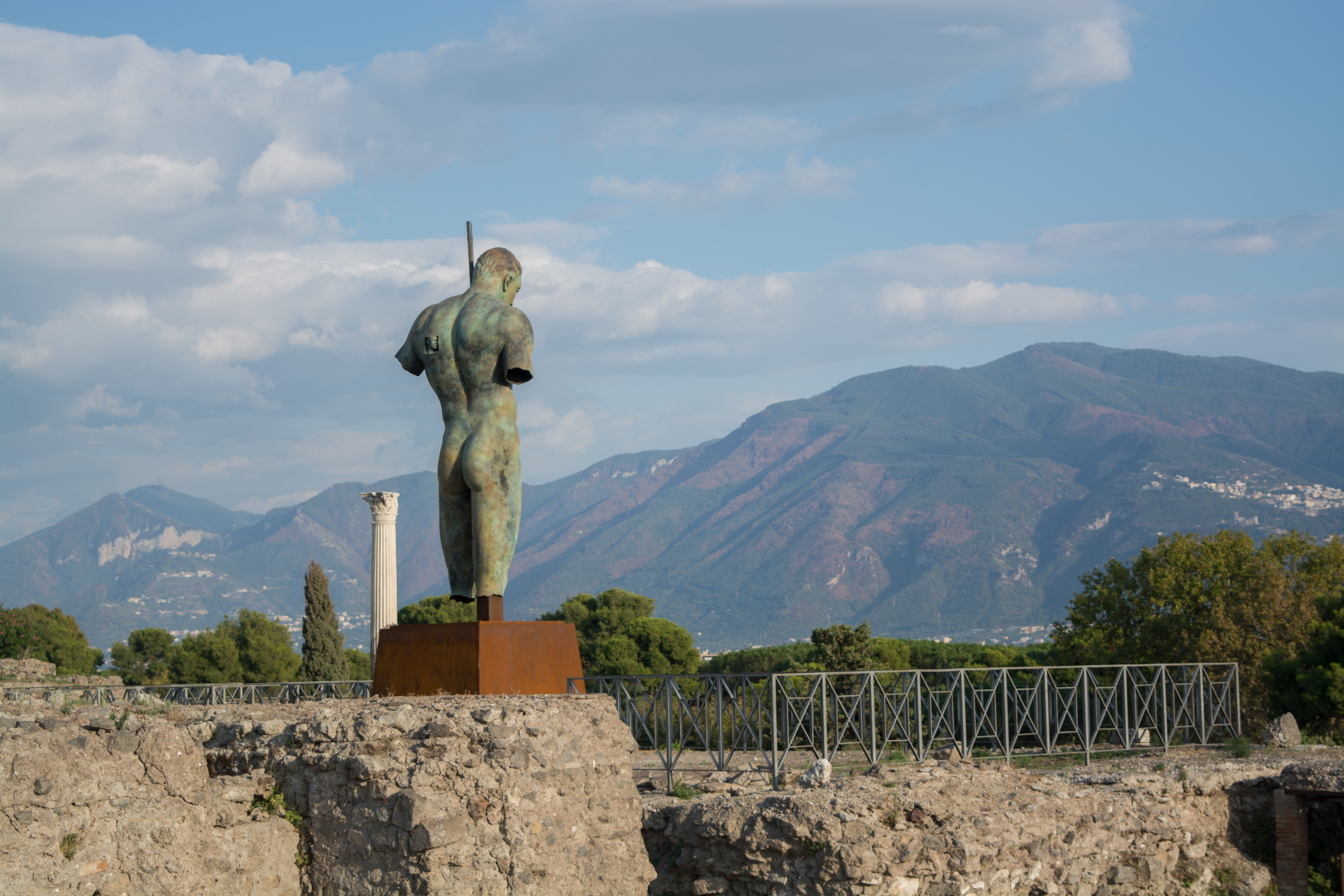
That was all for Day 5! Tomorrow we will go to Herculaneum, a smaller town than Pompeii but even better preserved. Check back soon for more!
